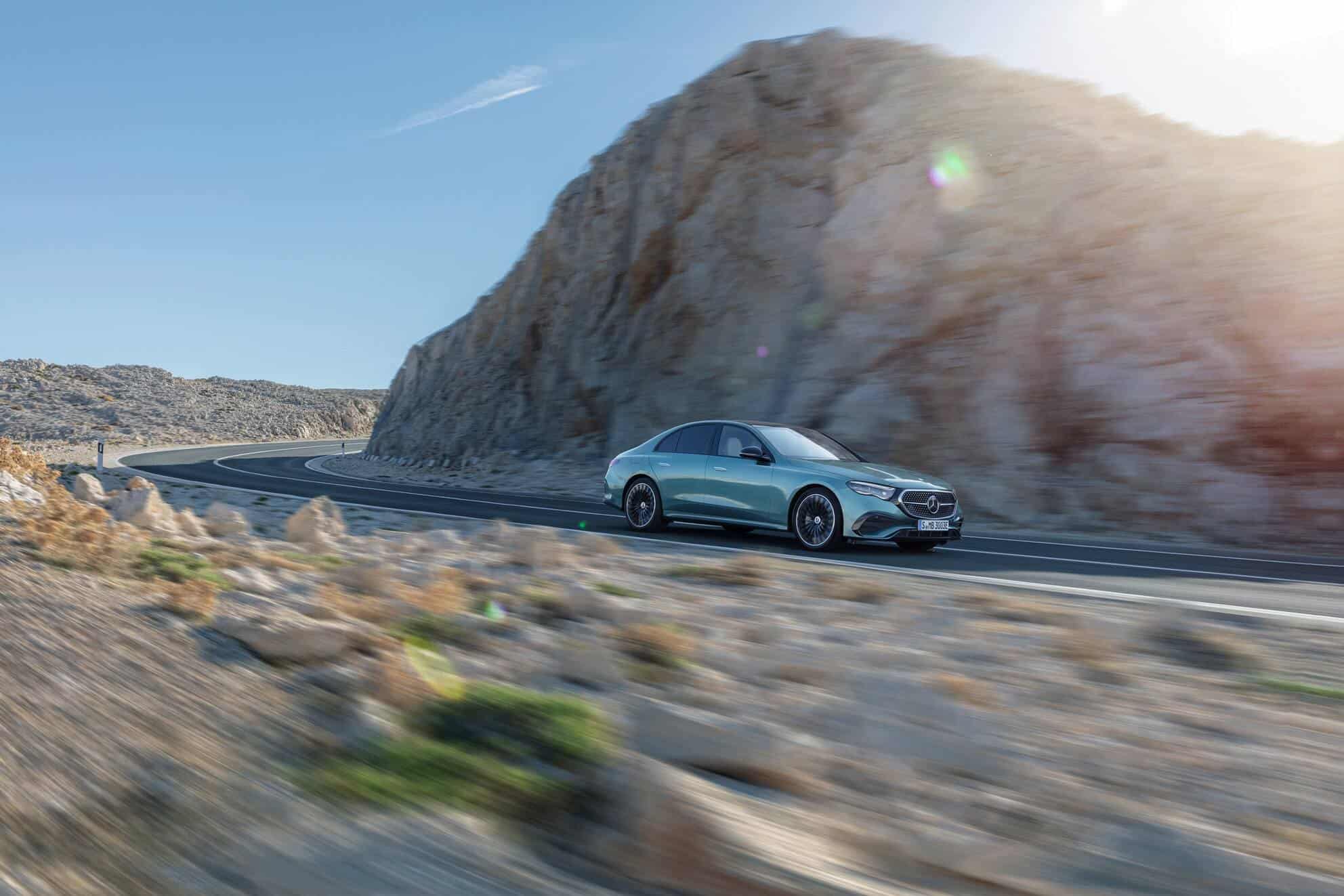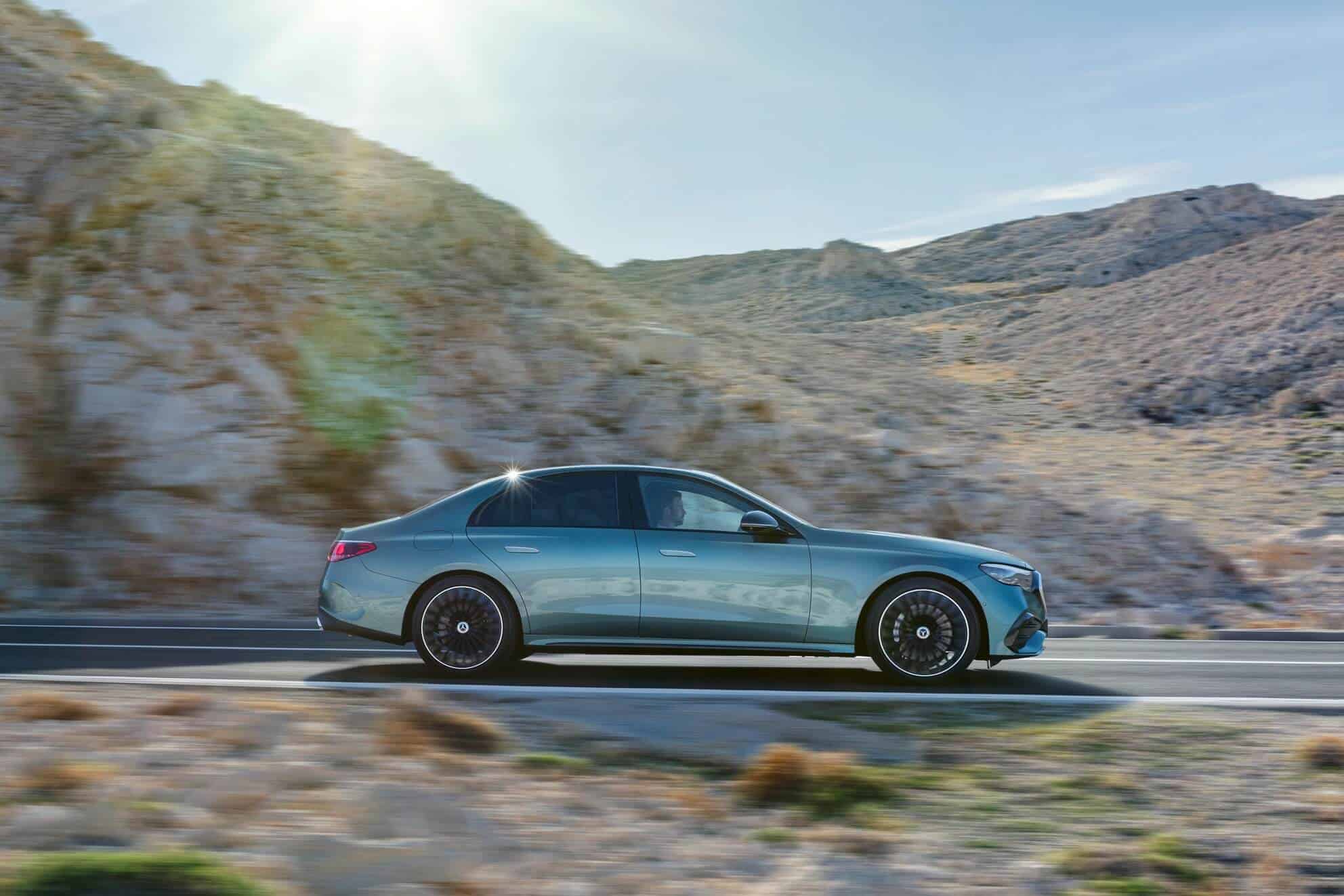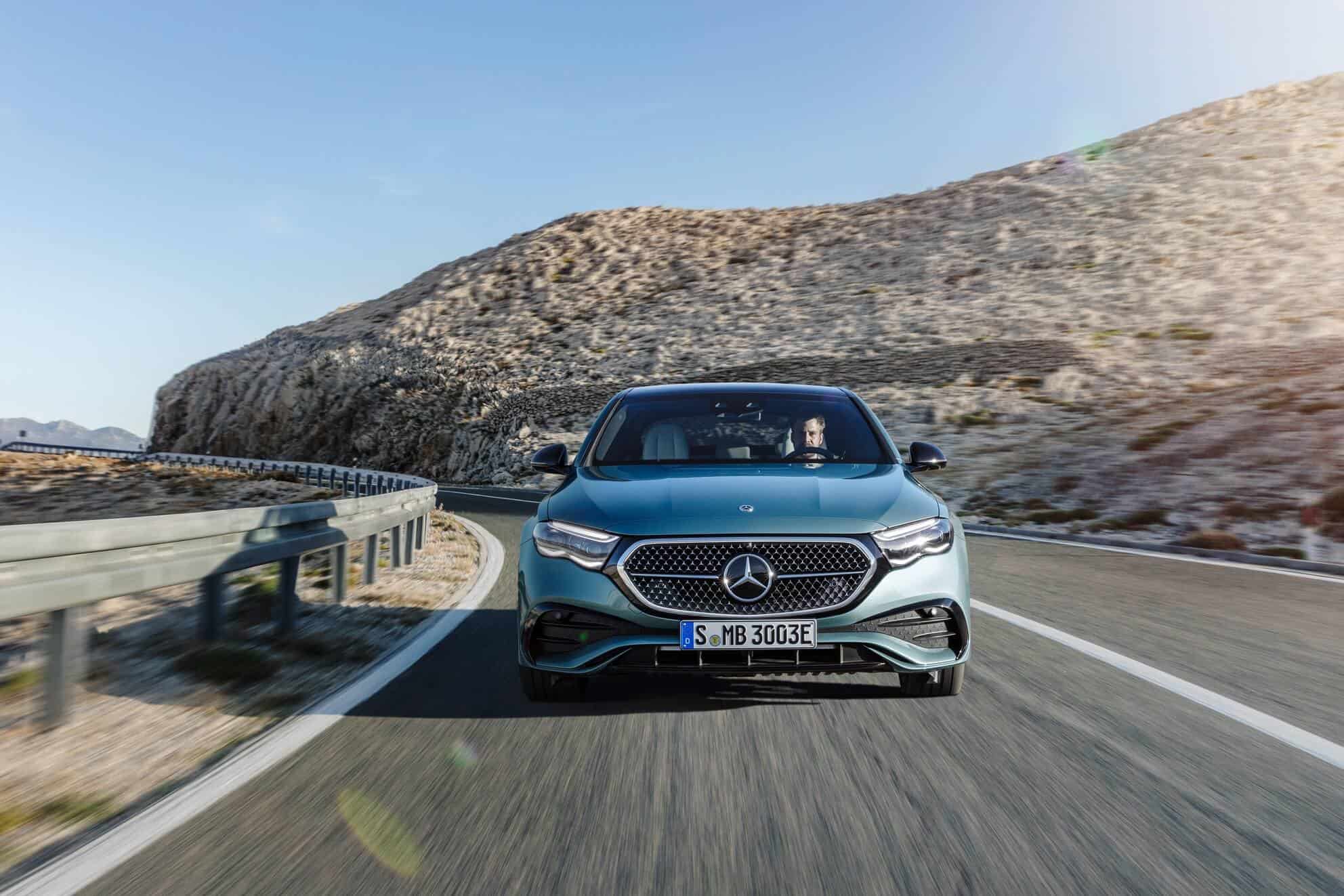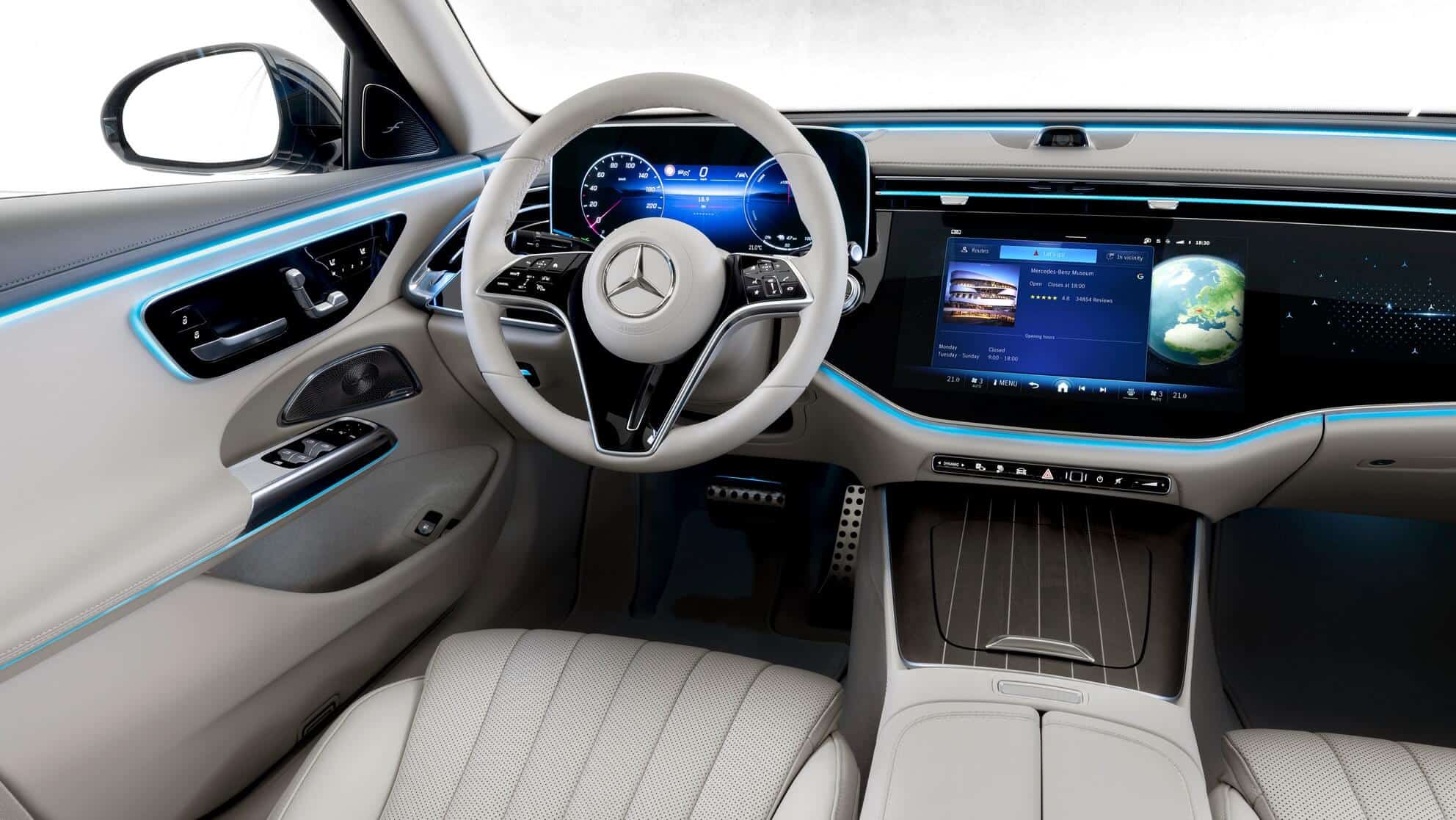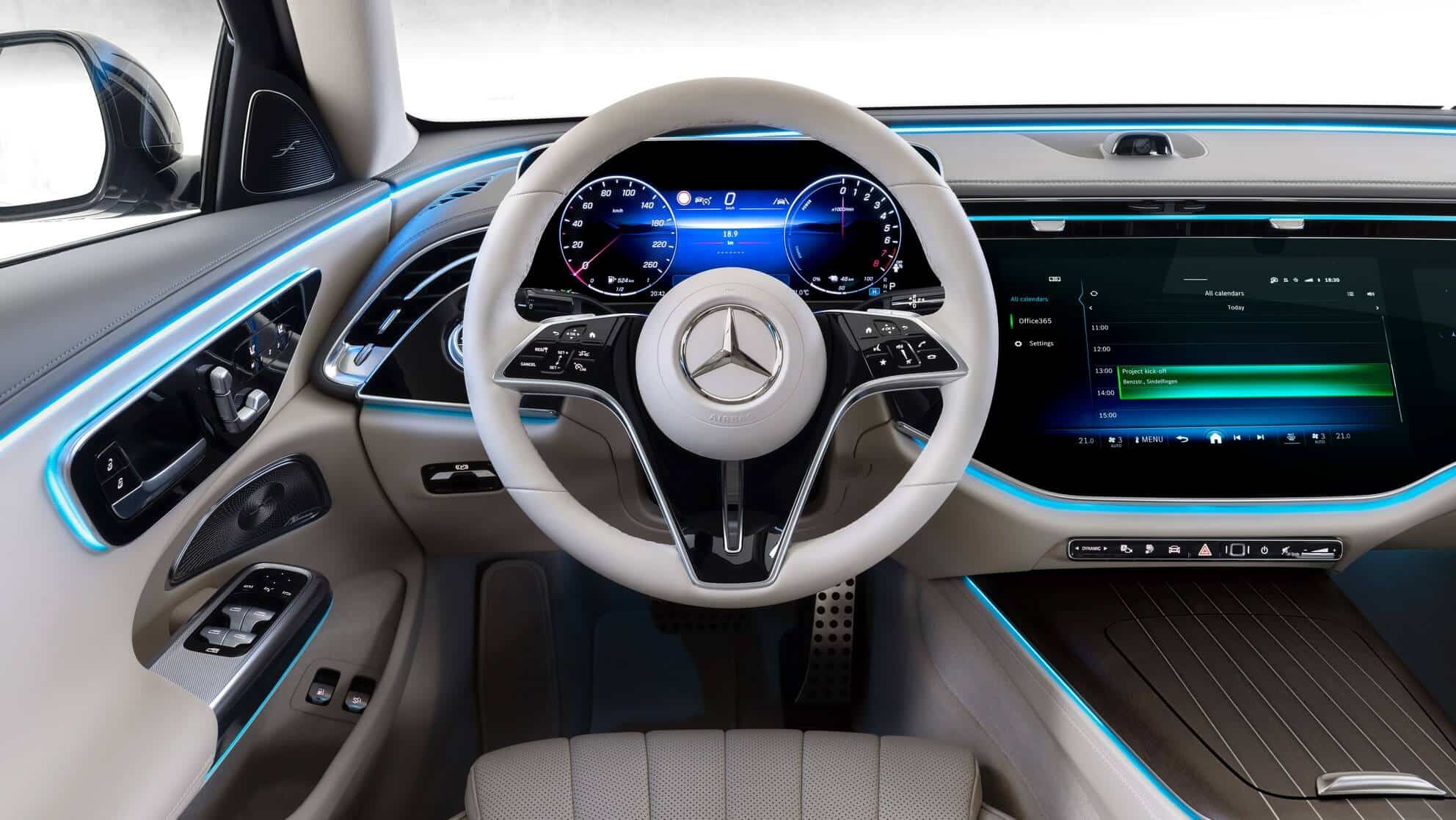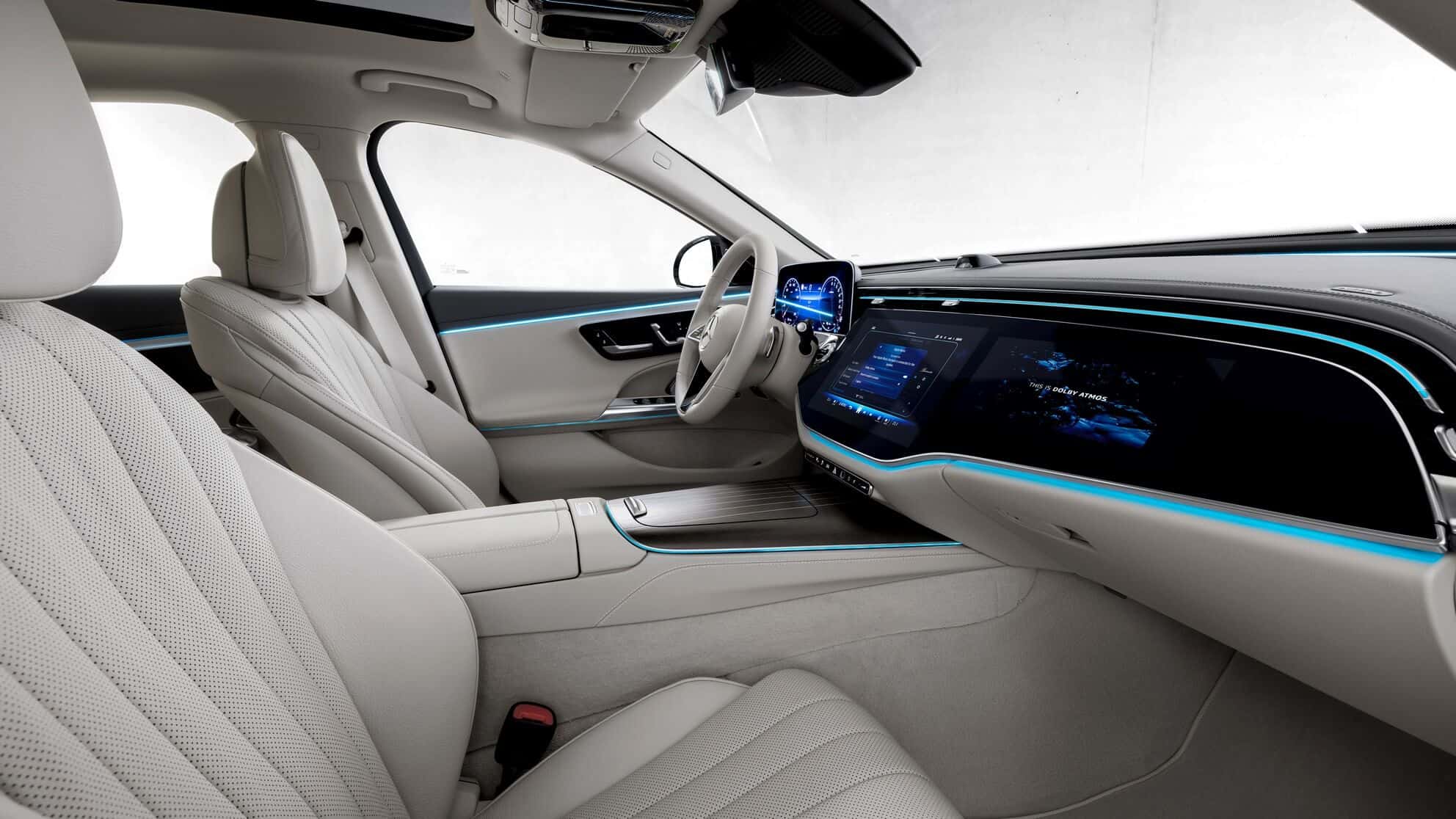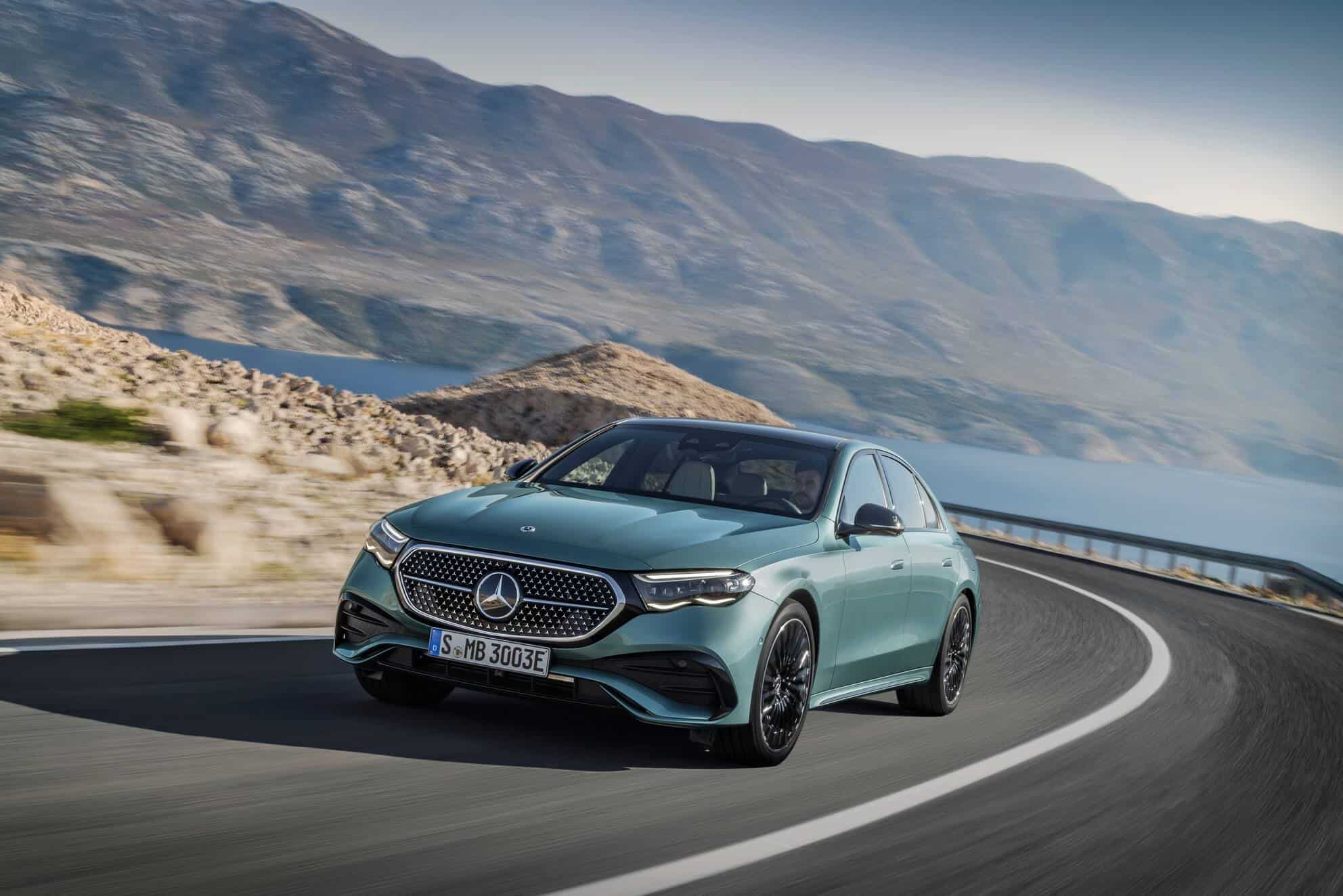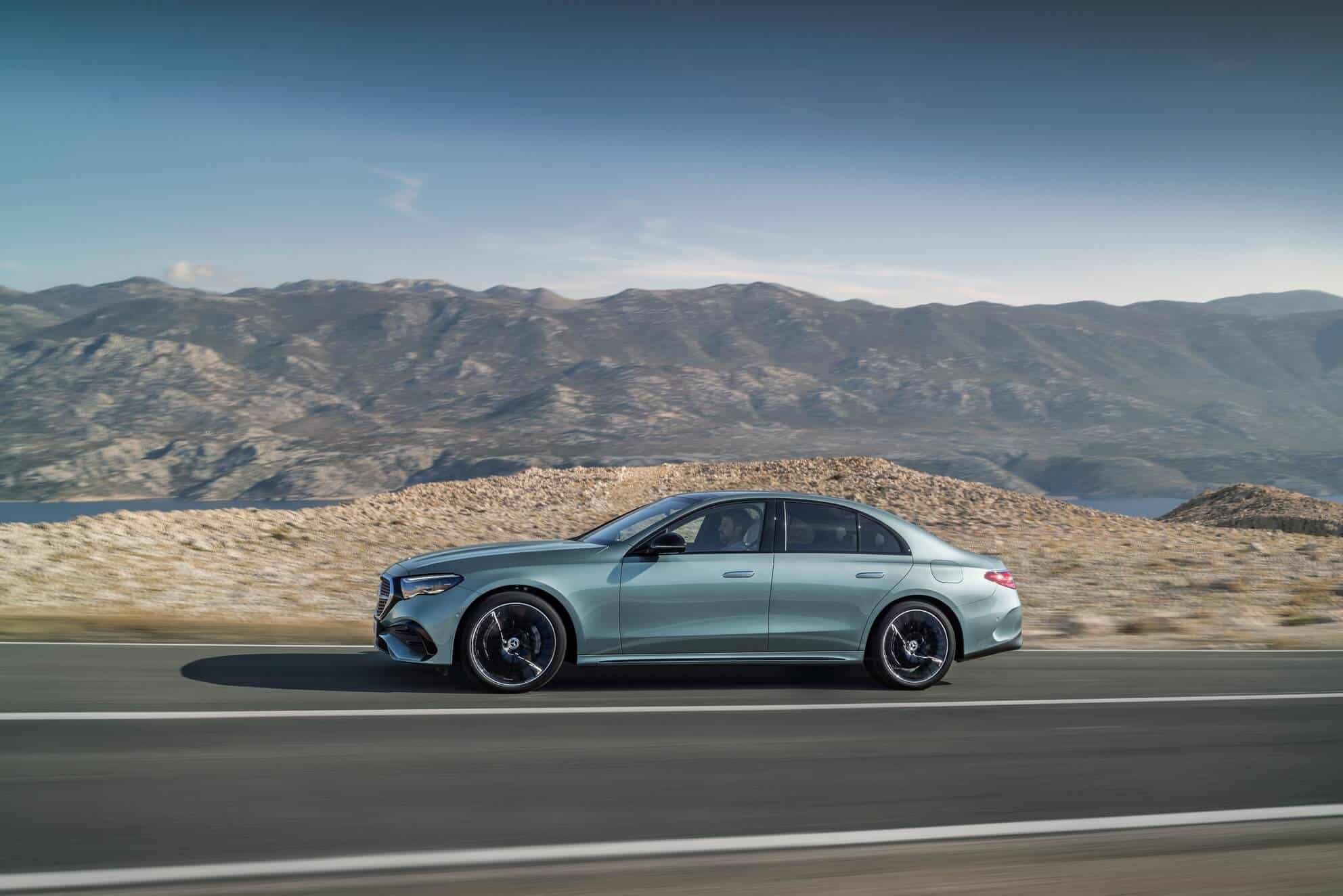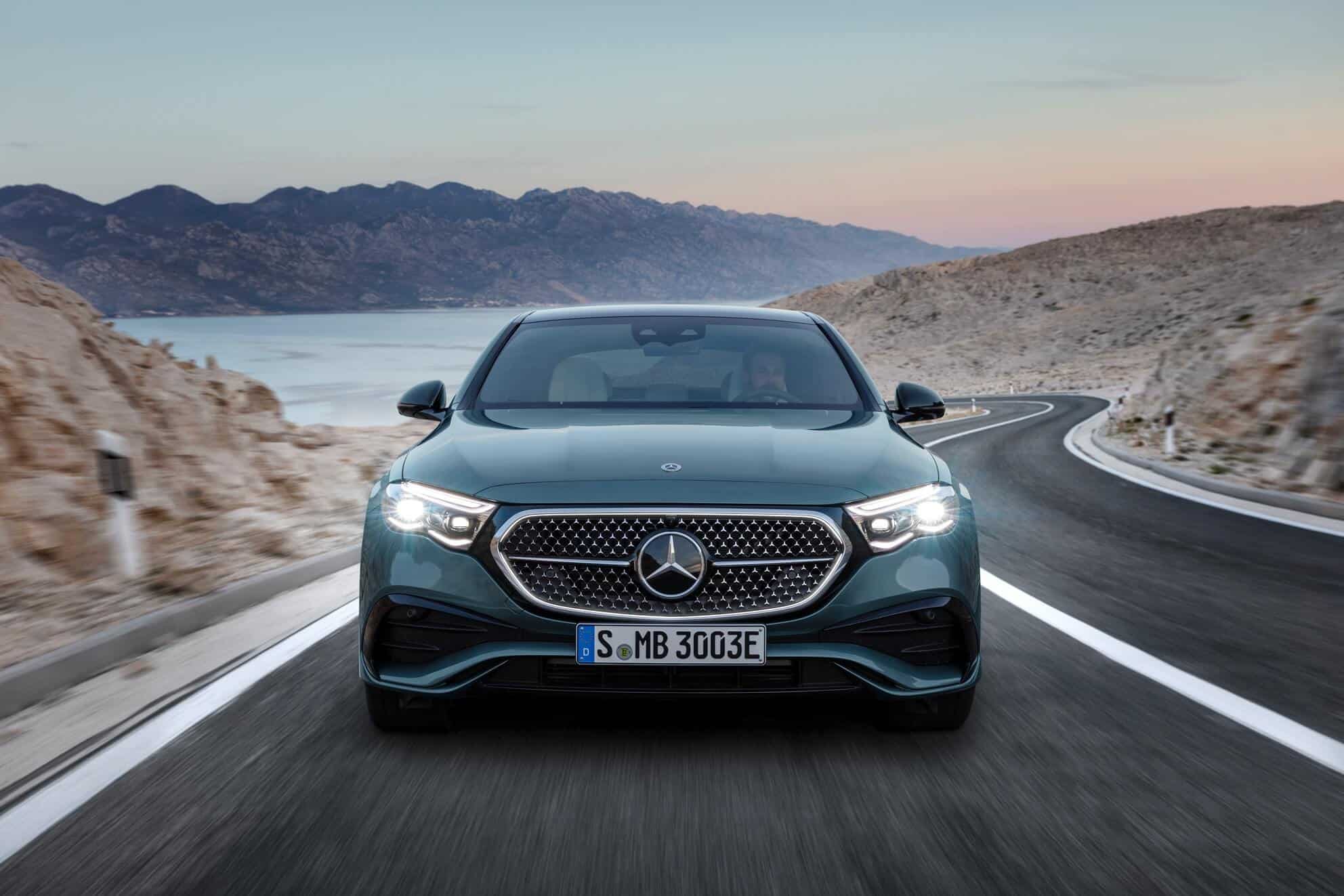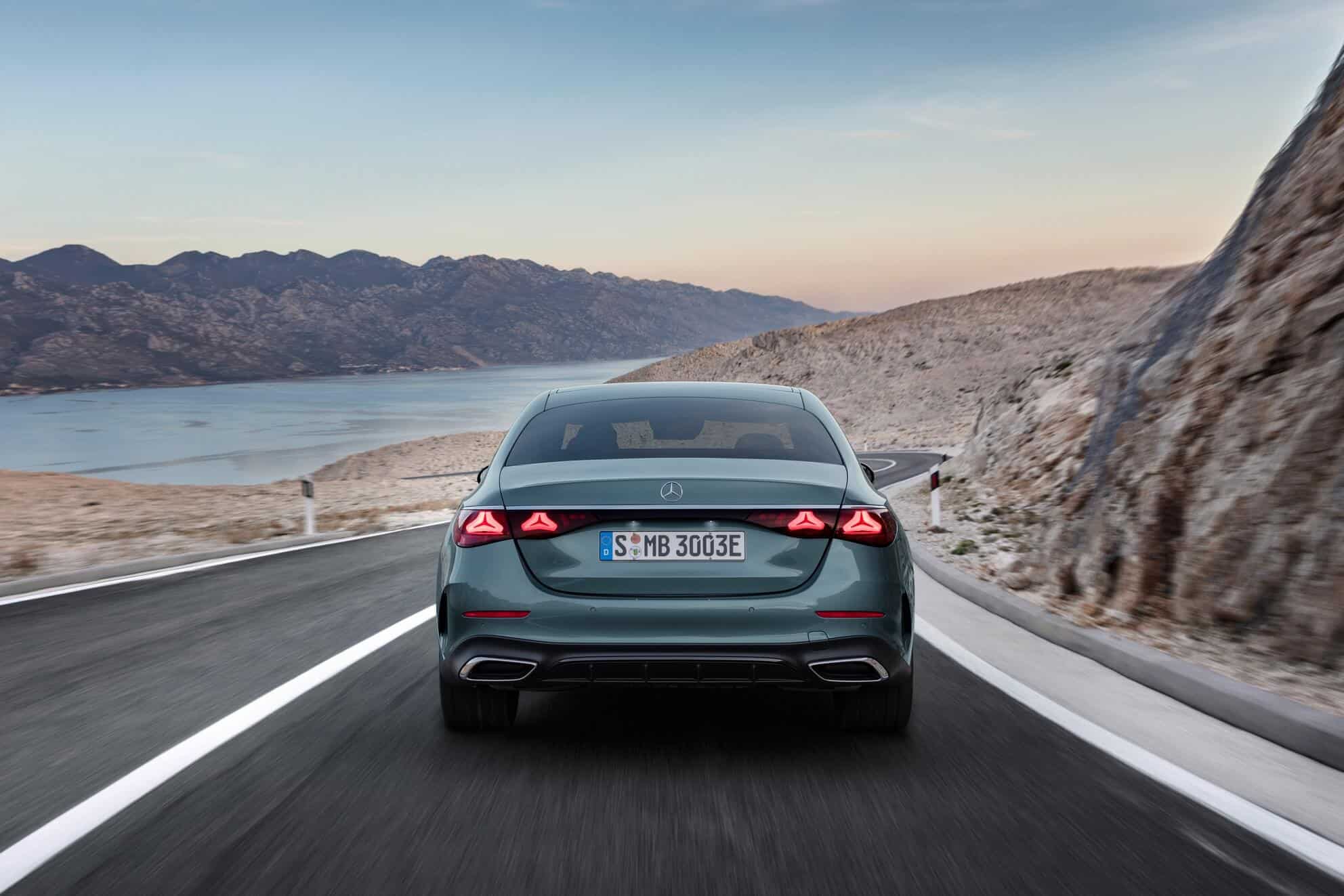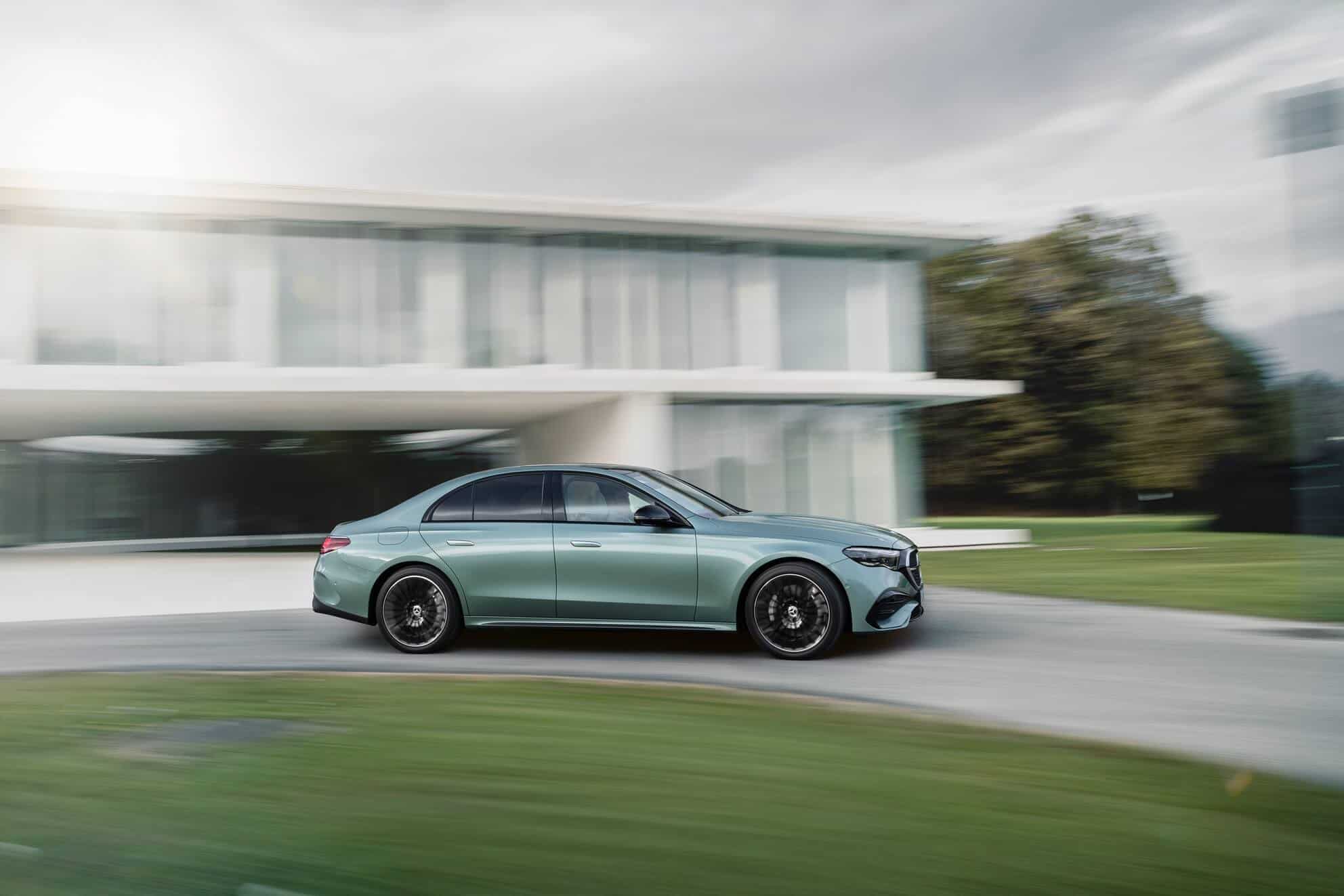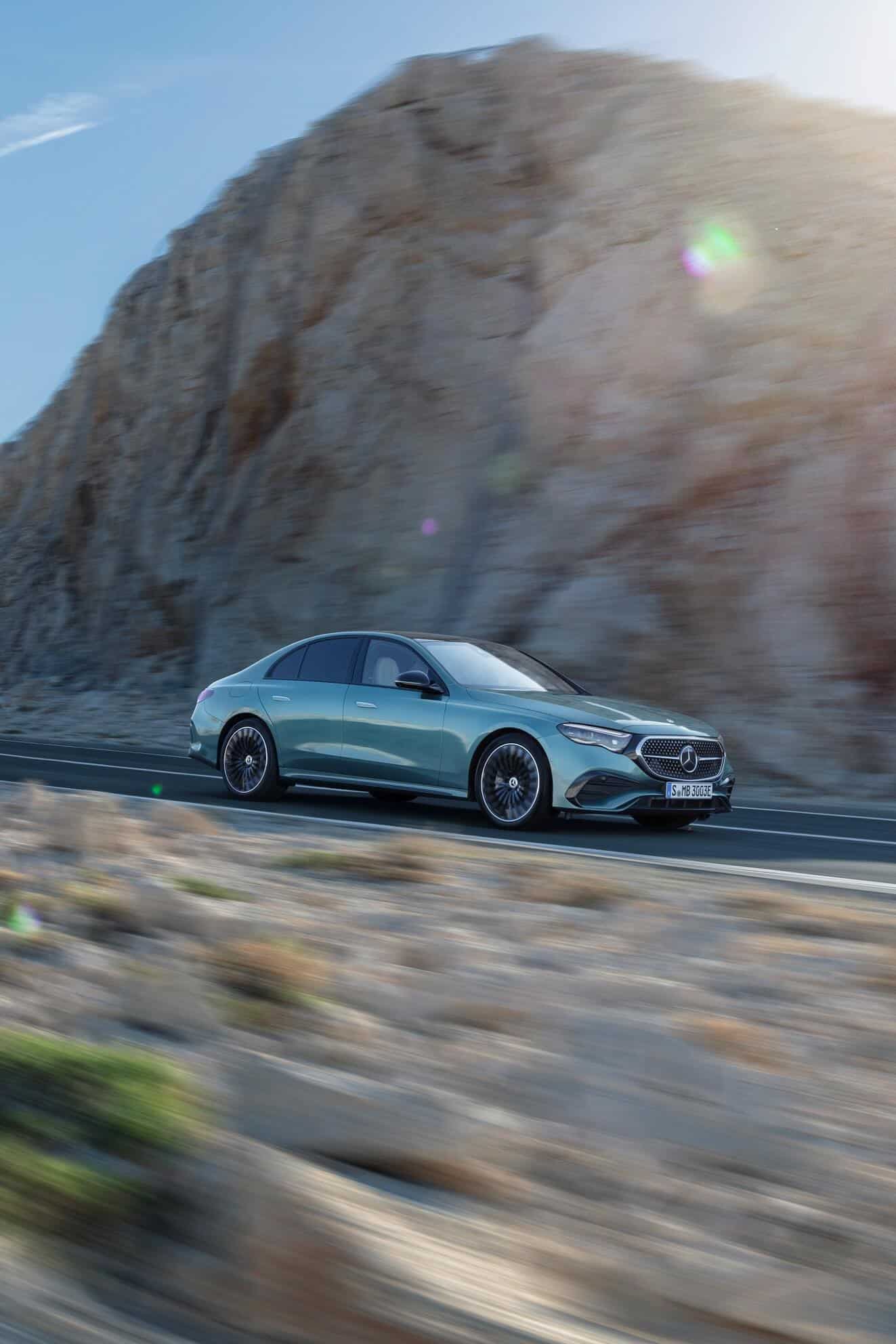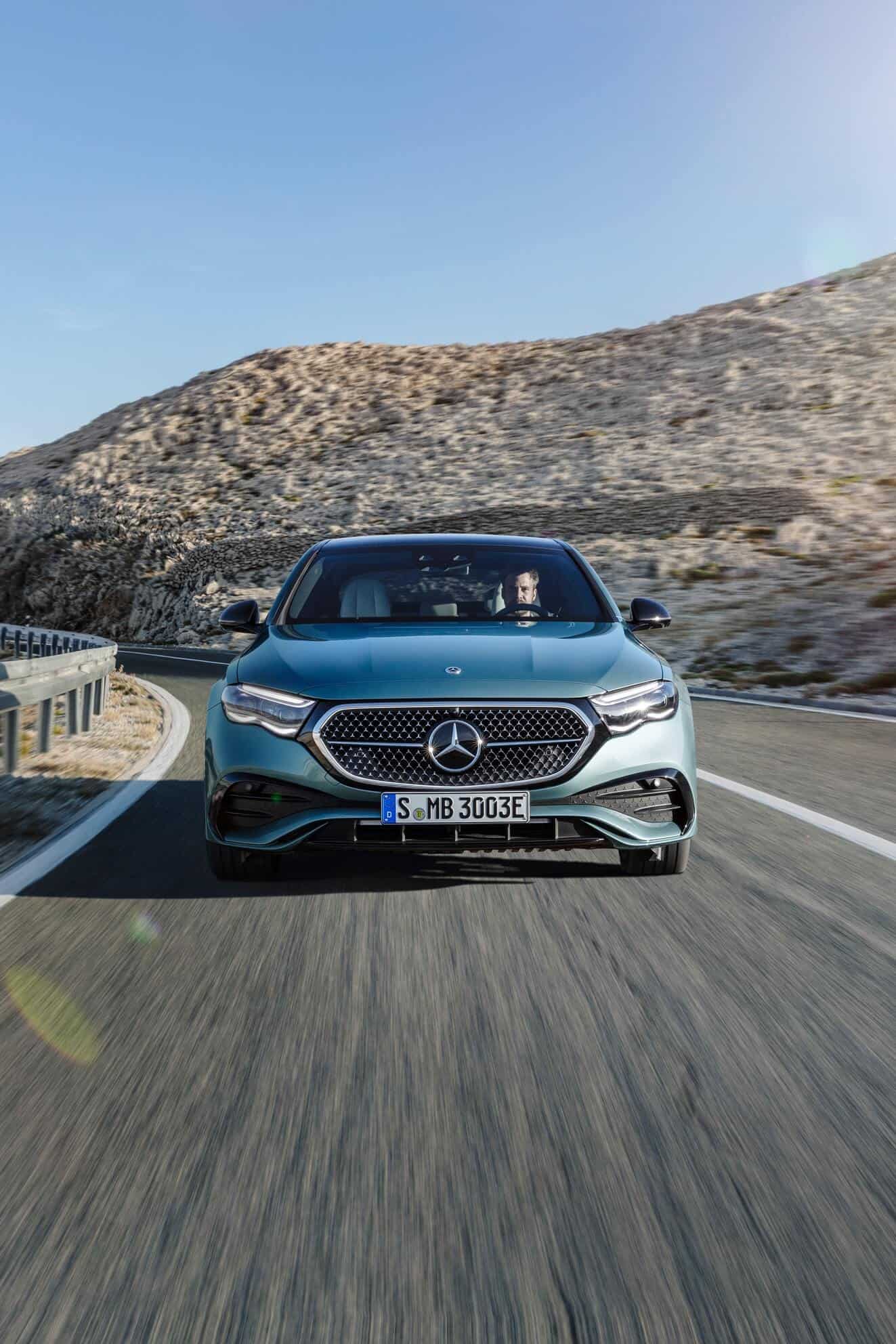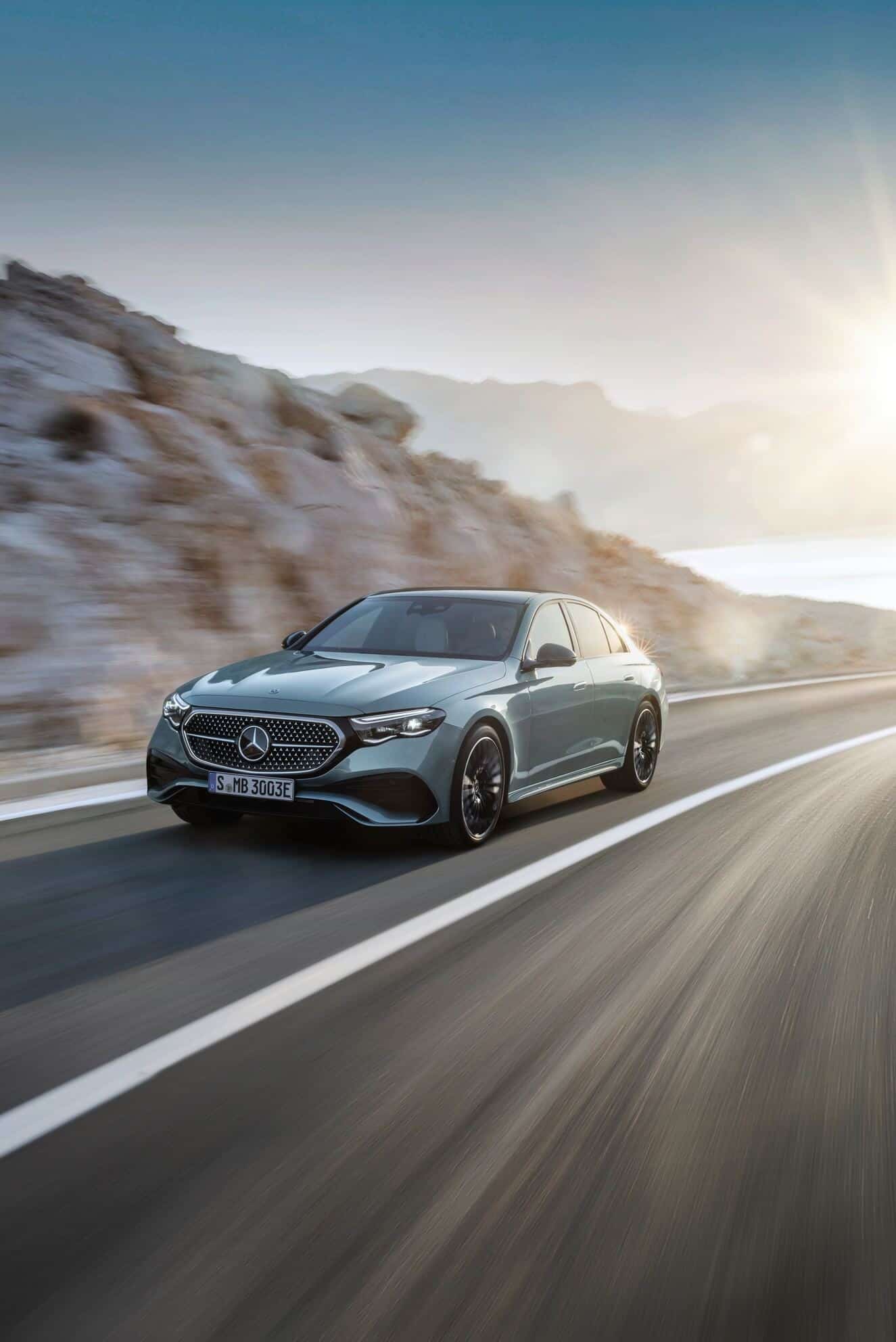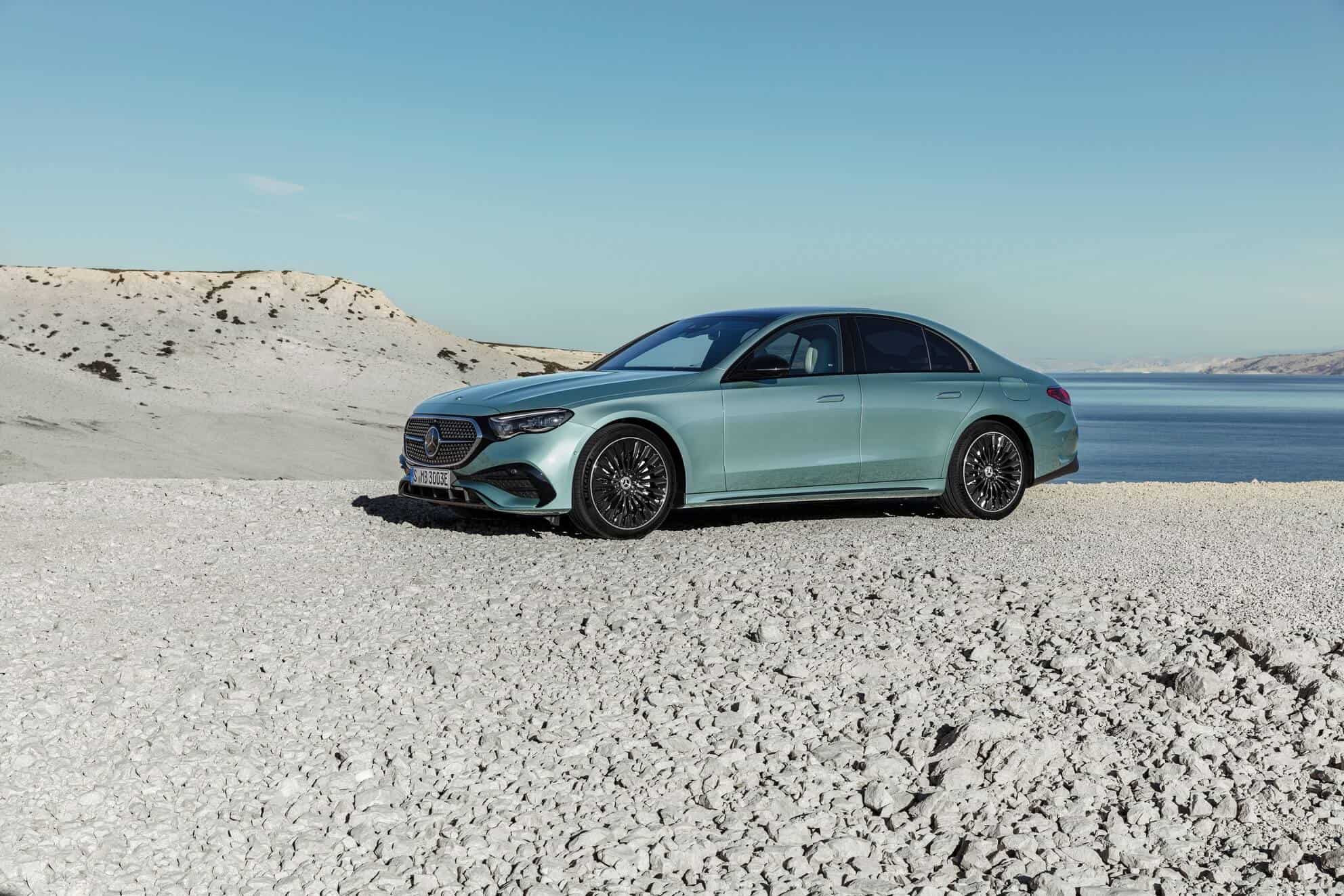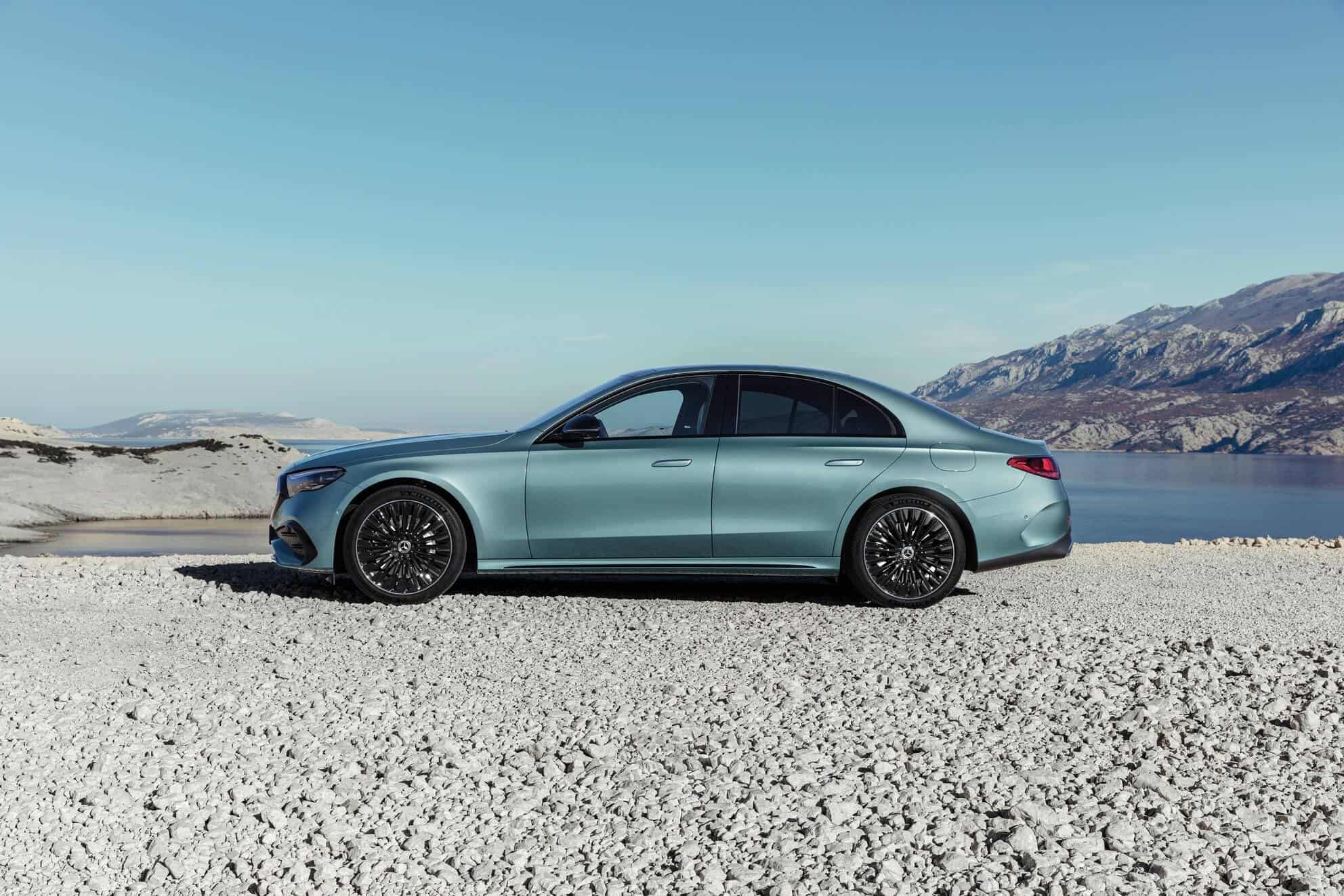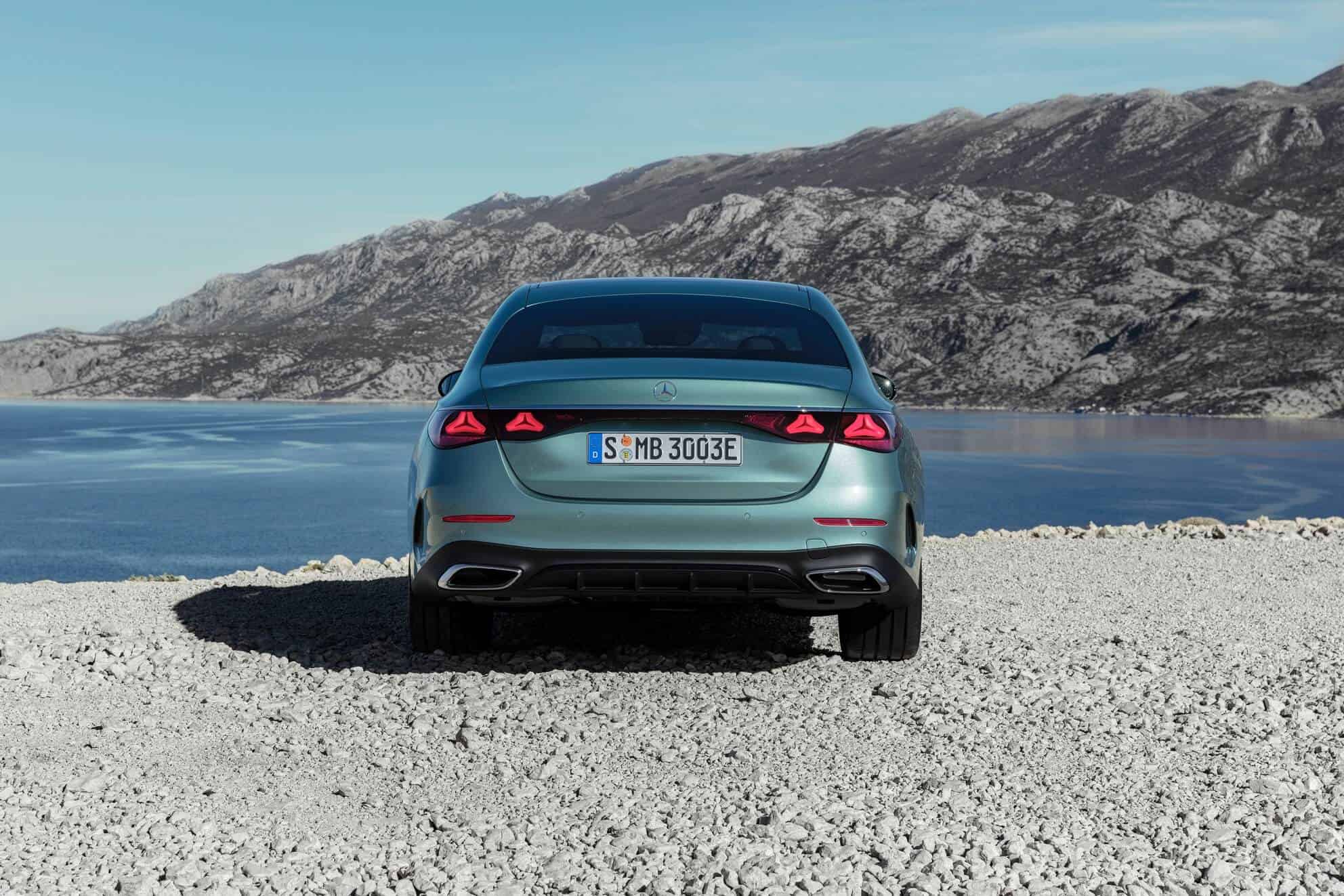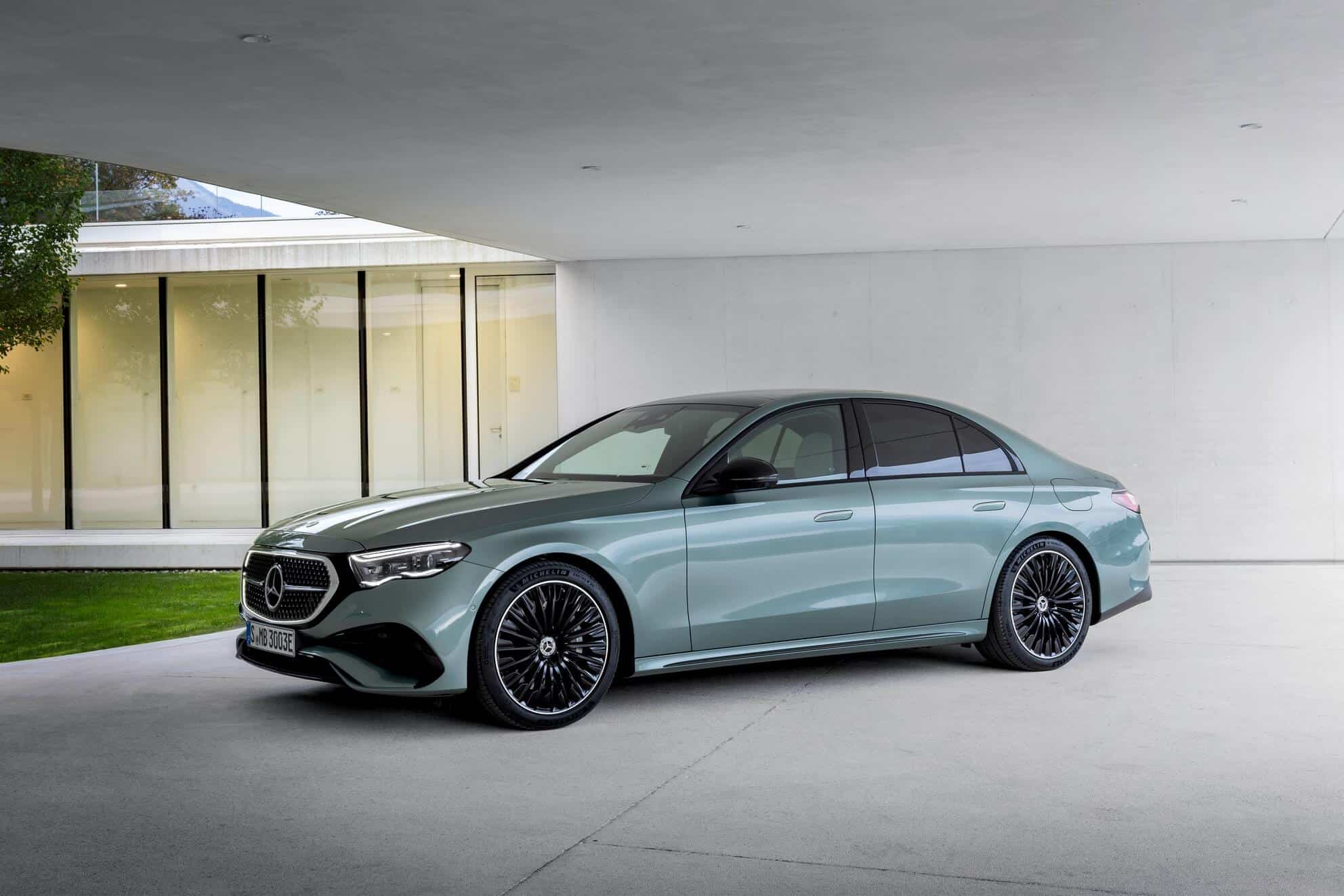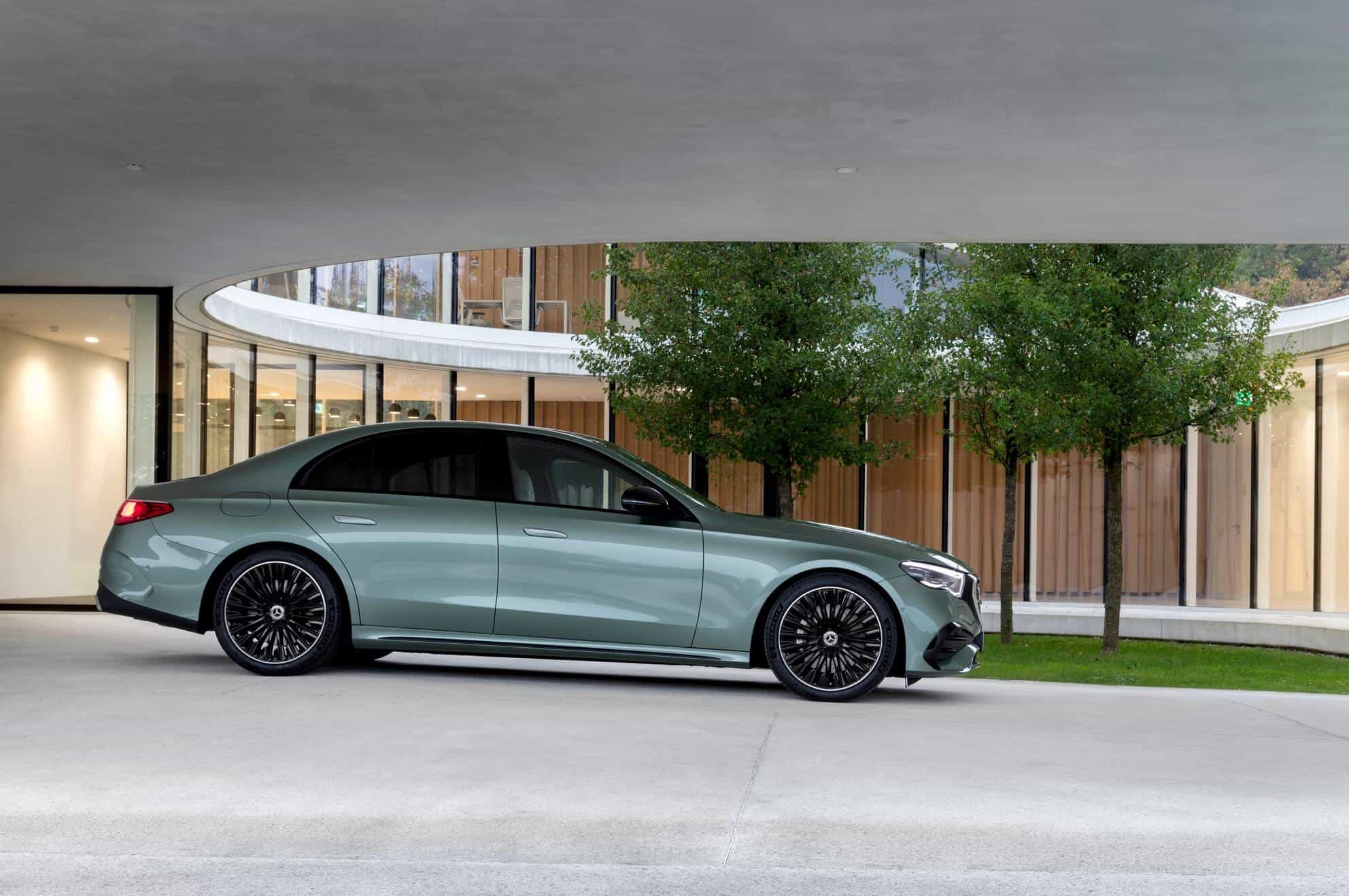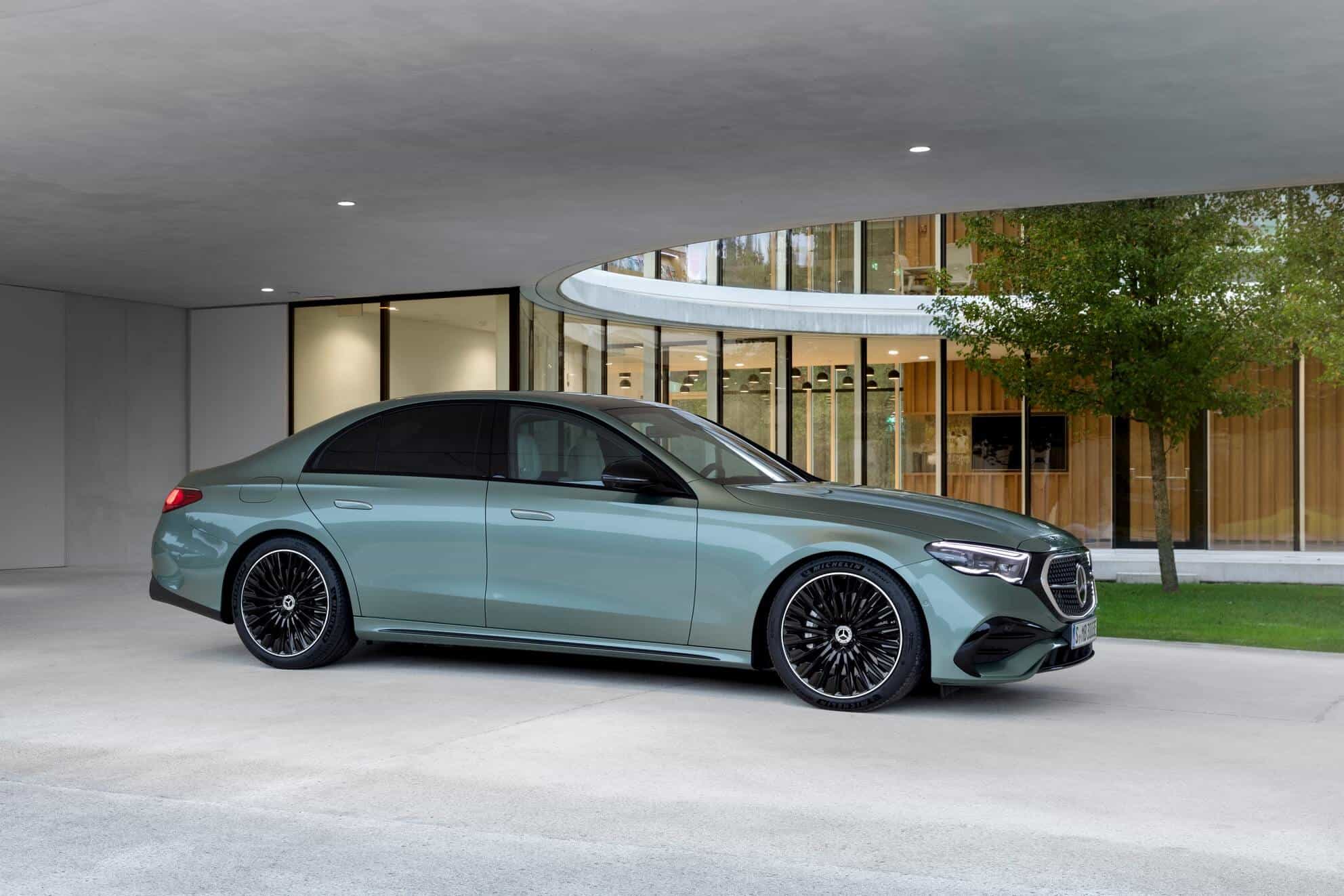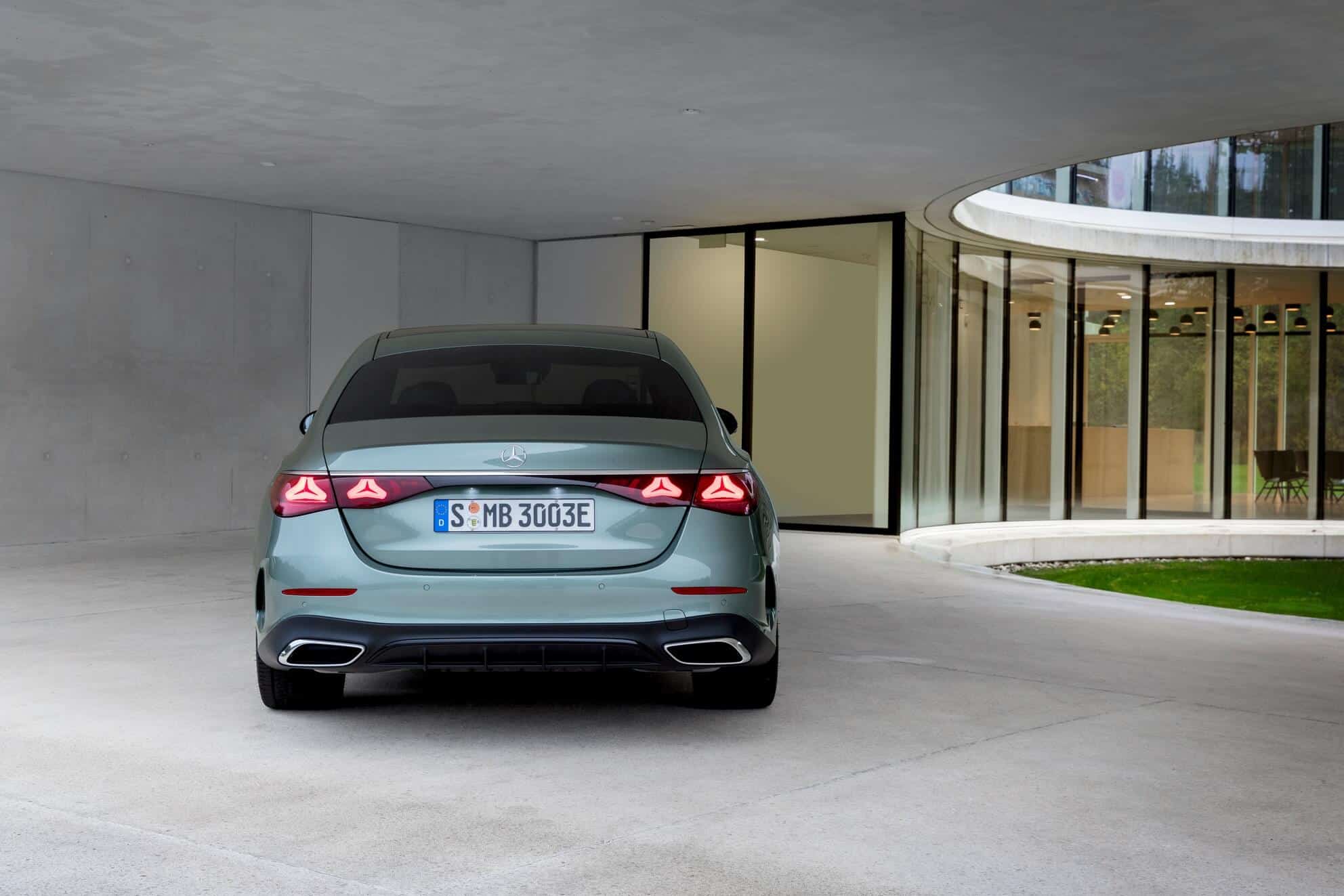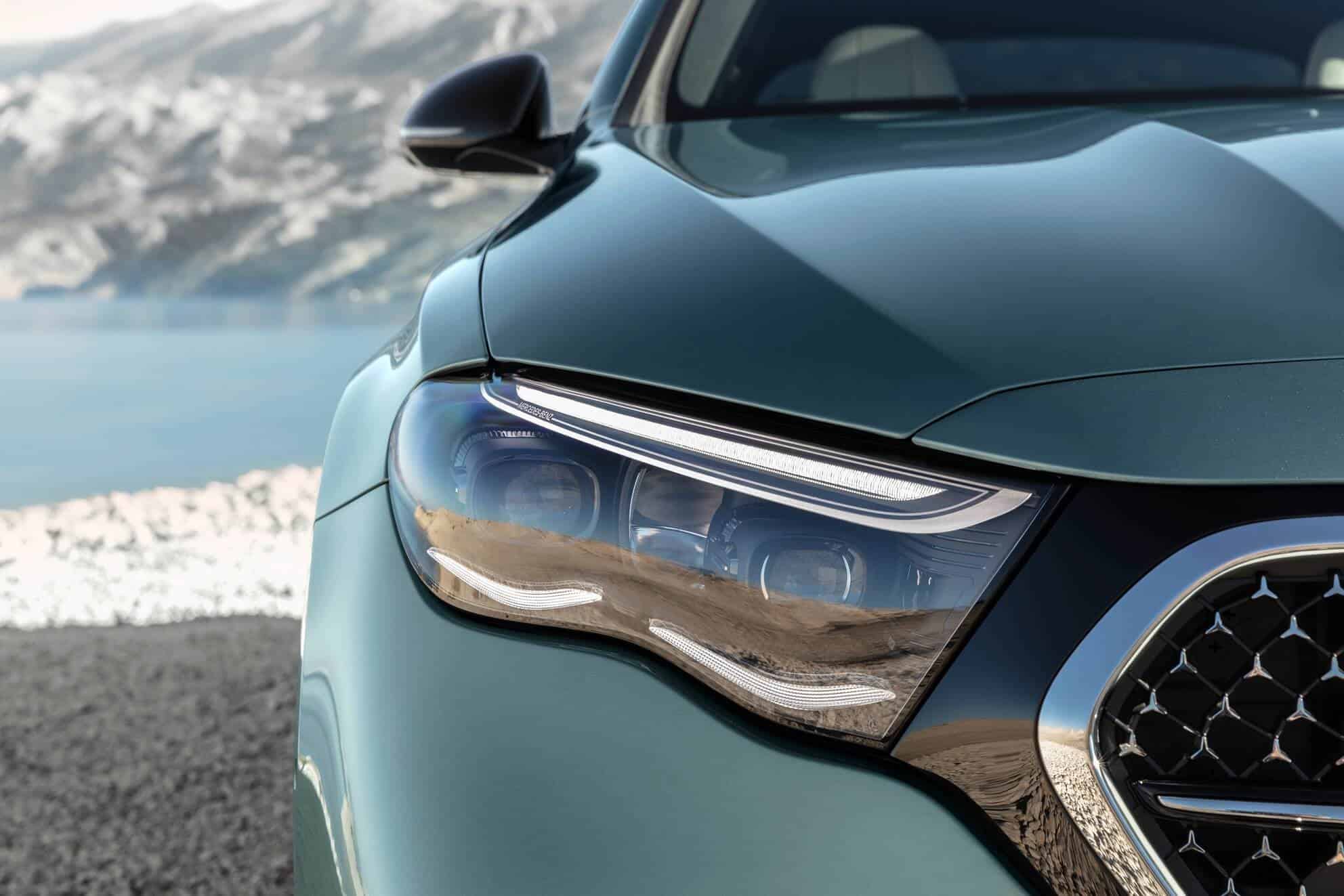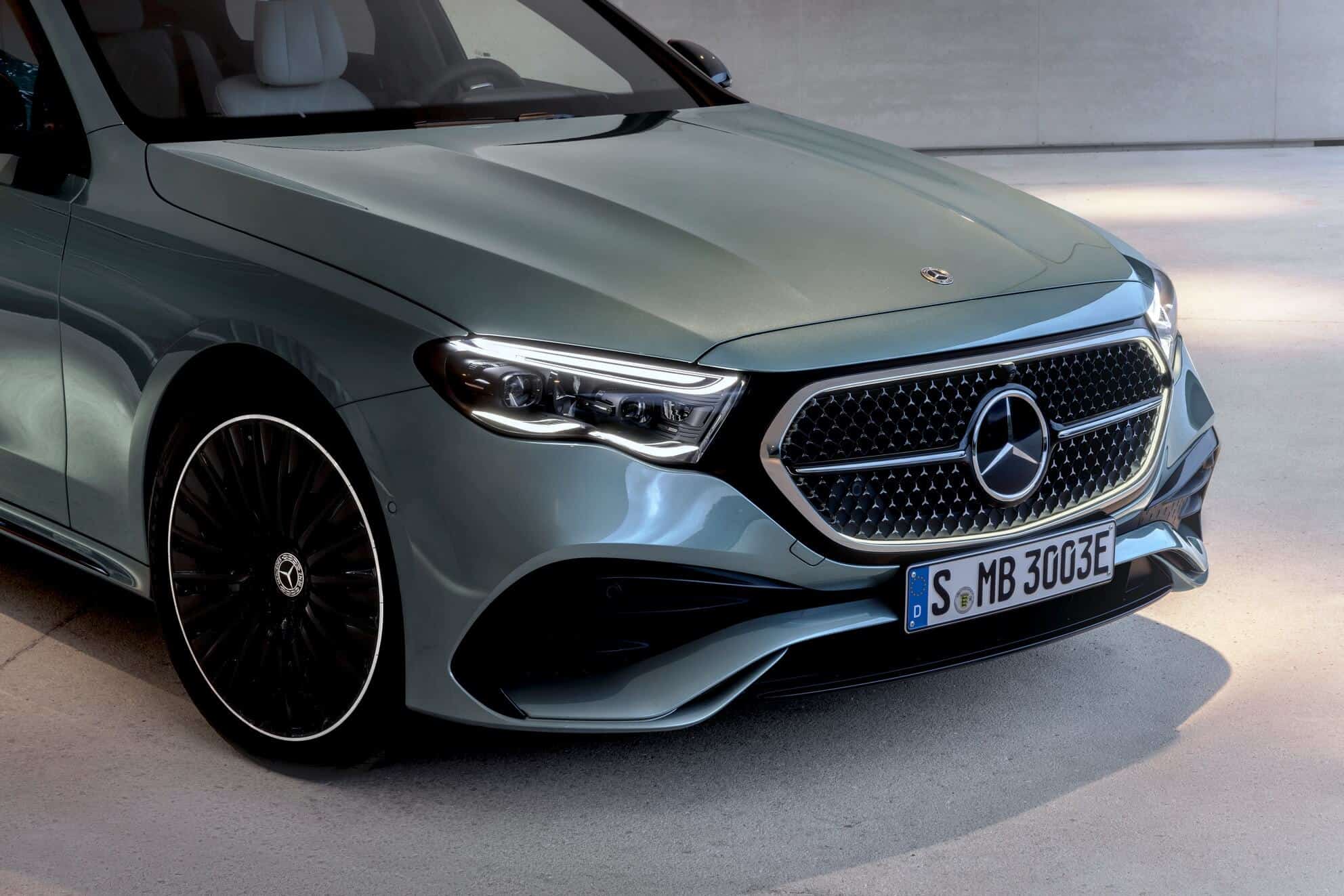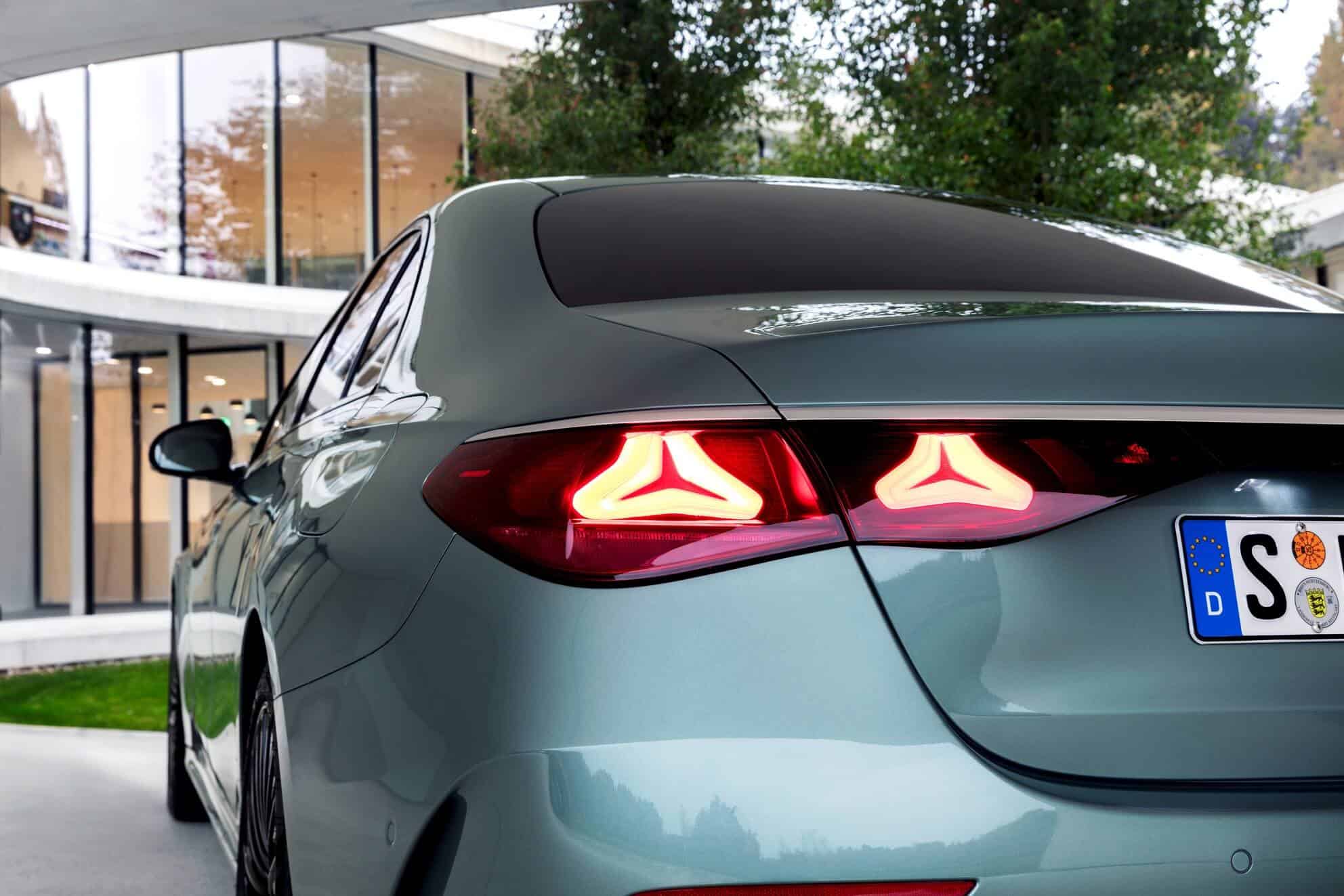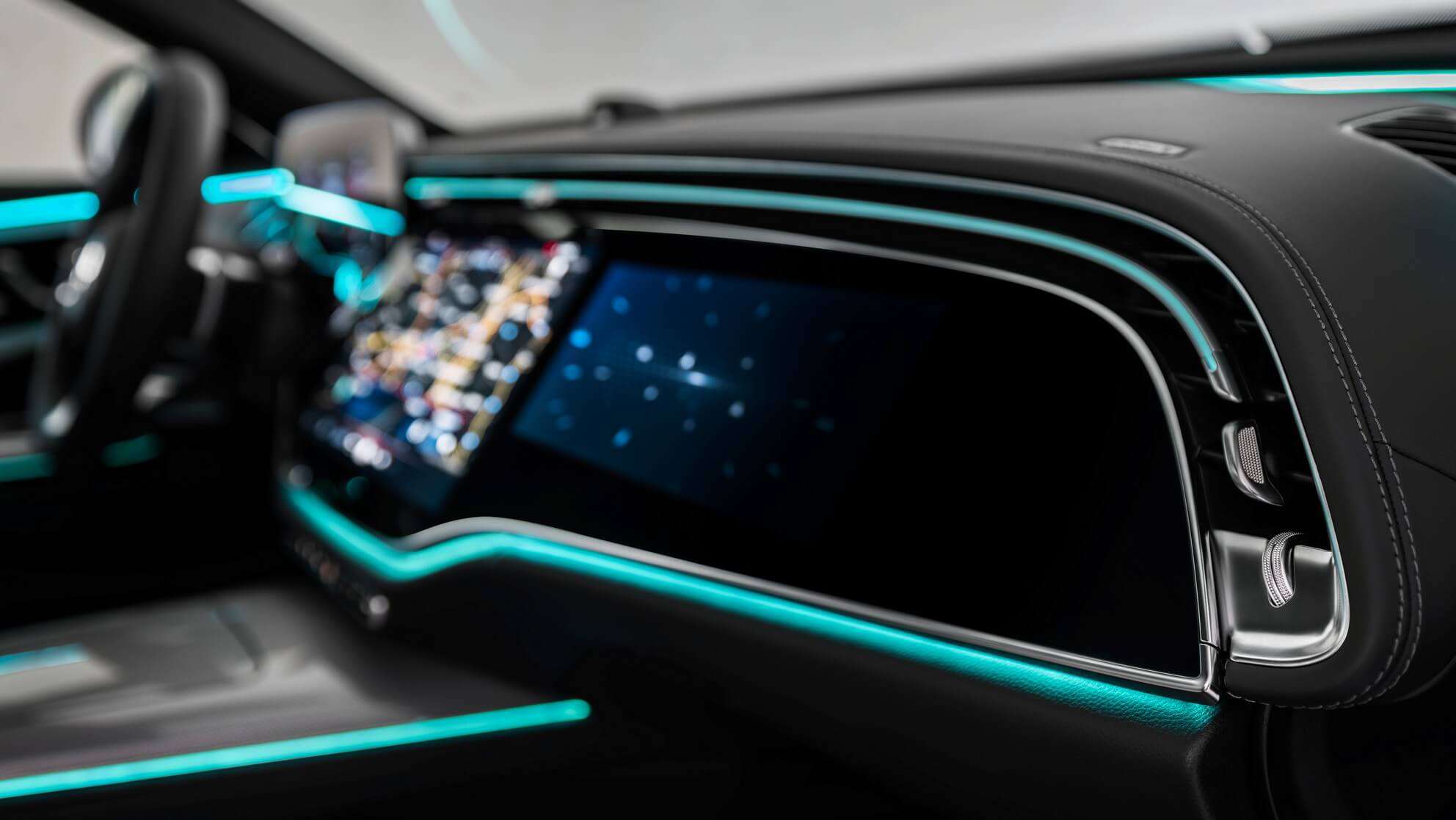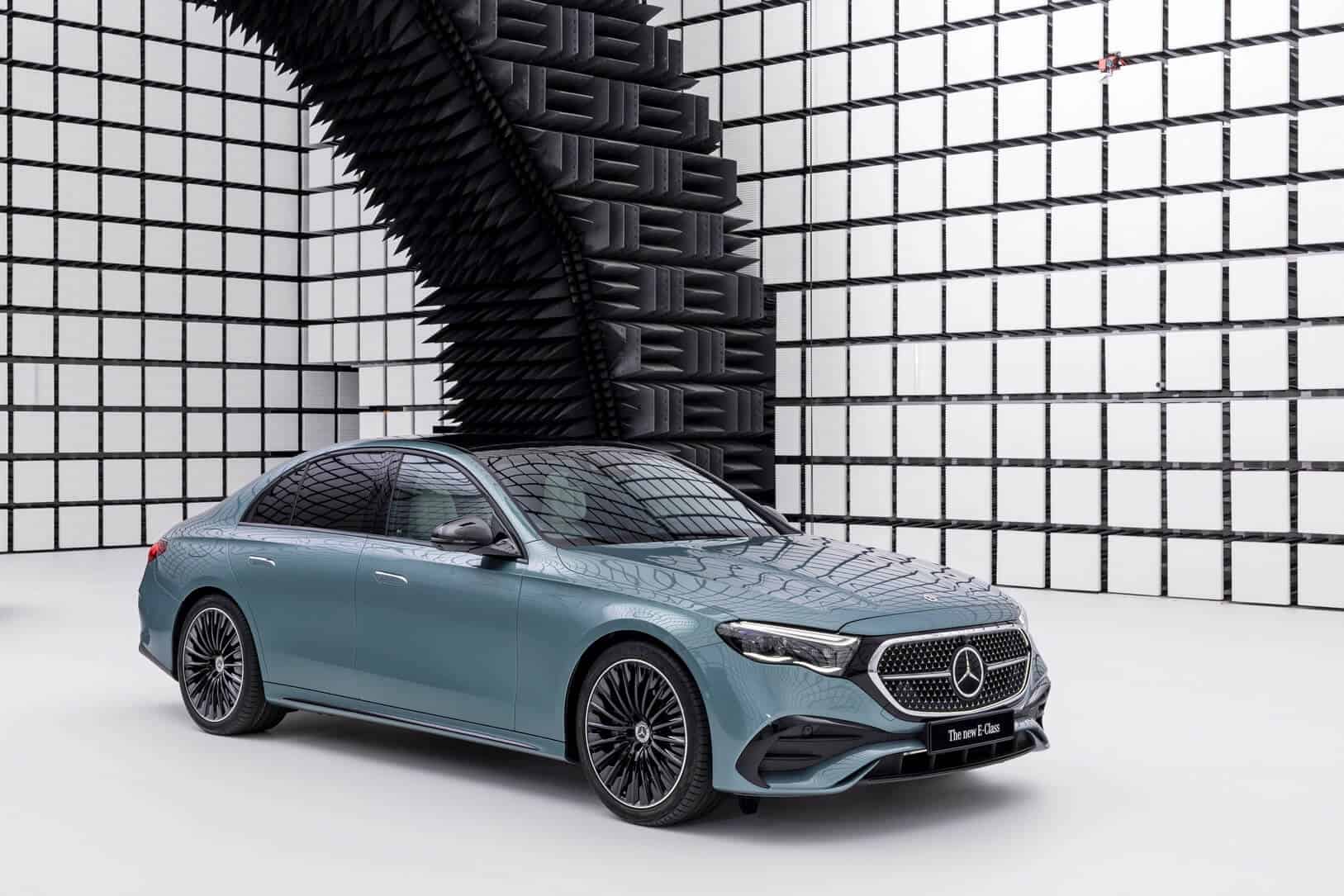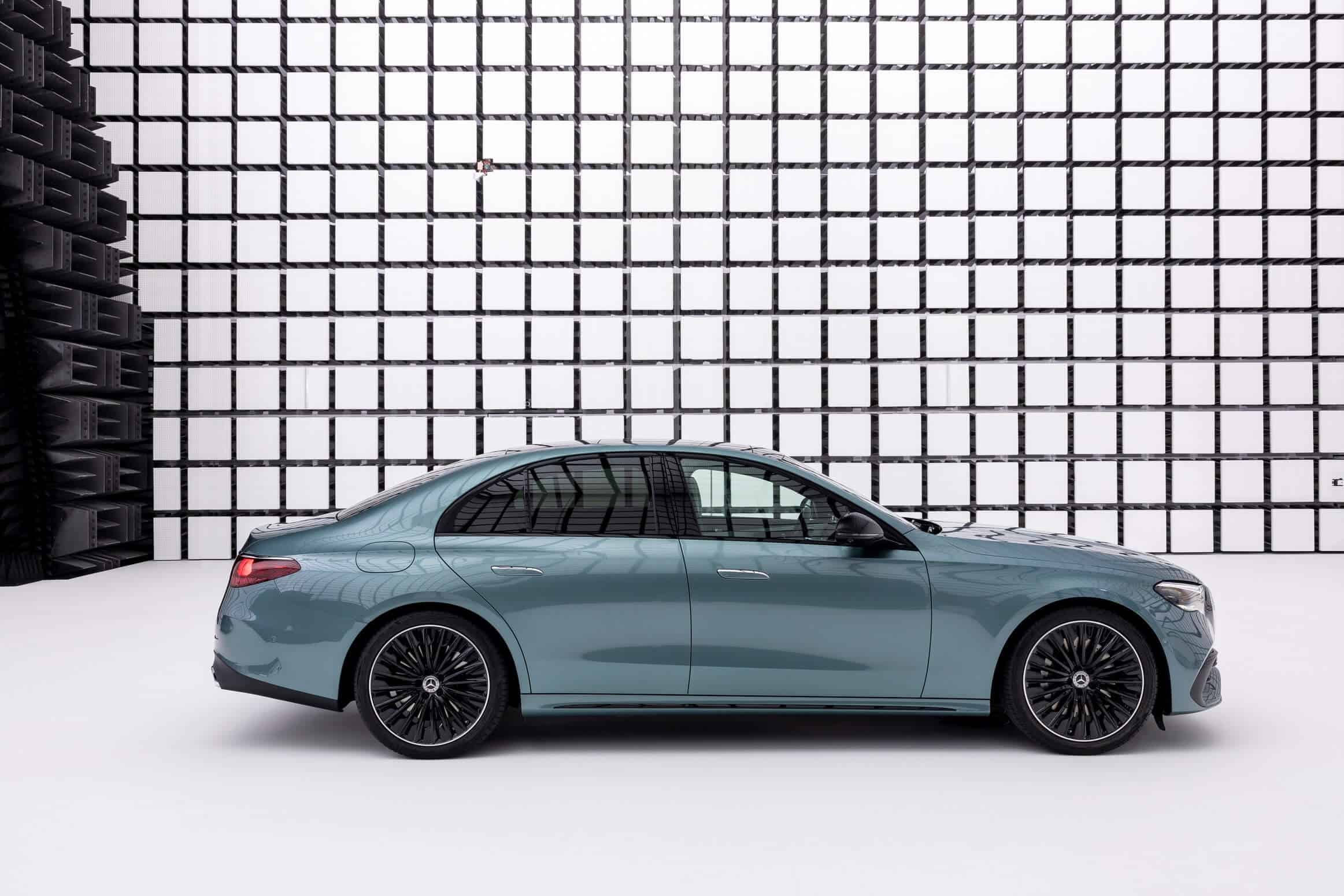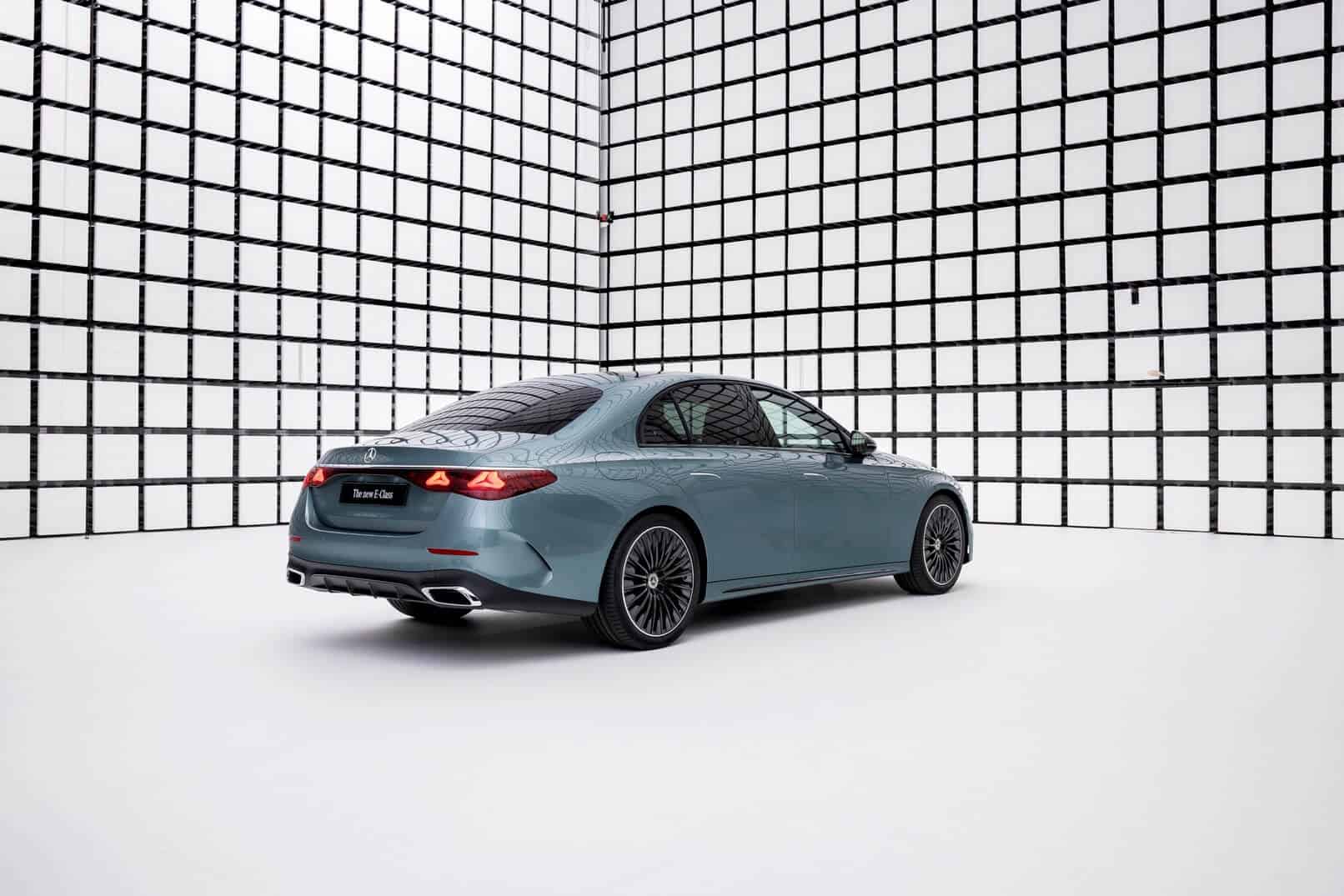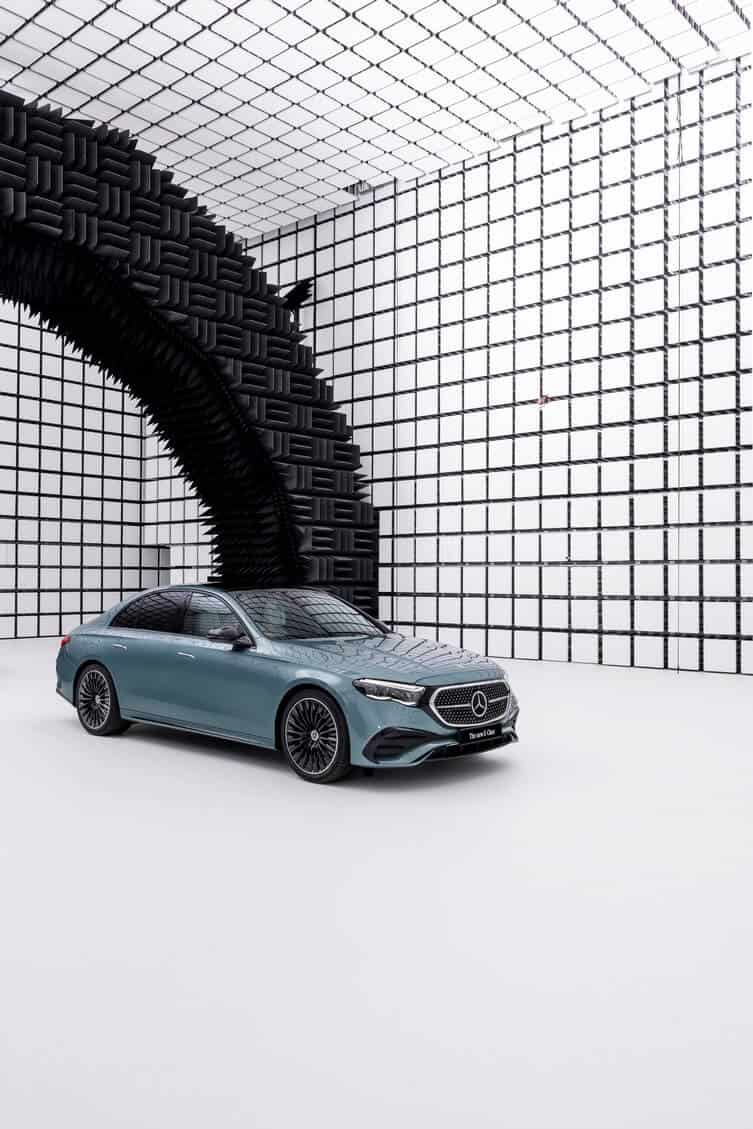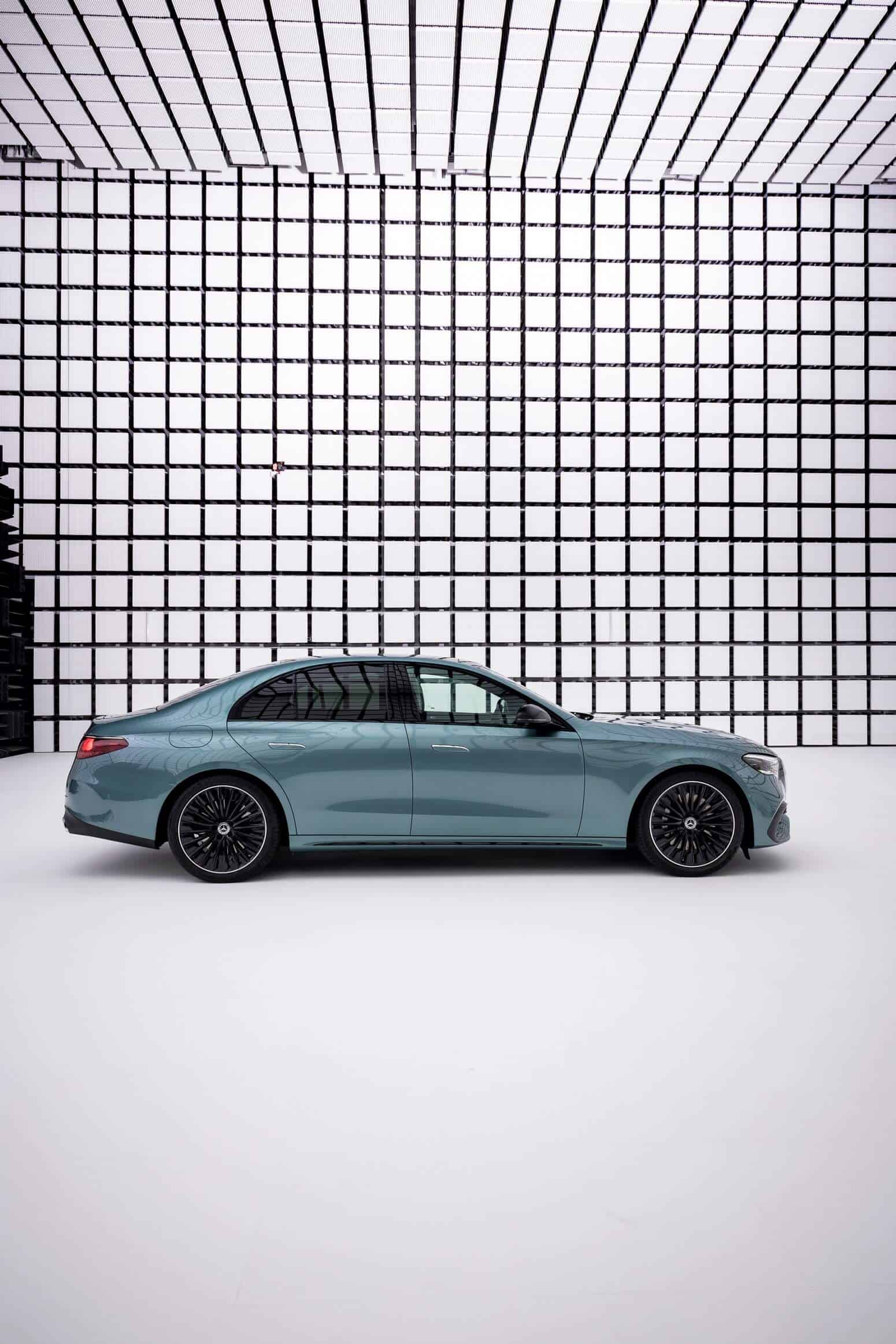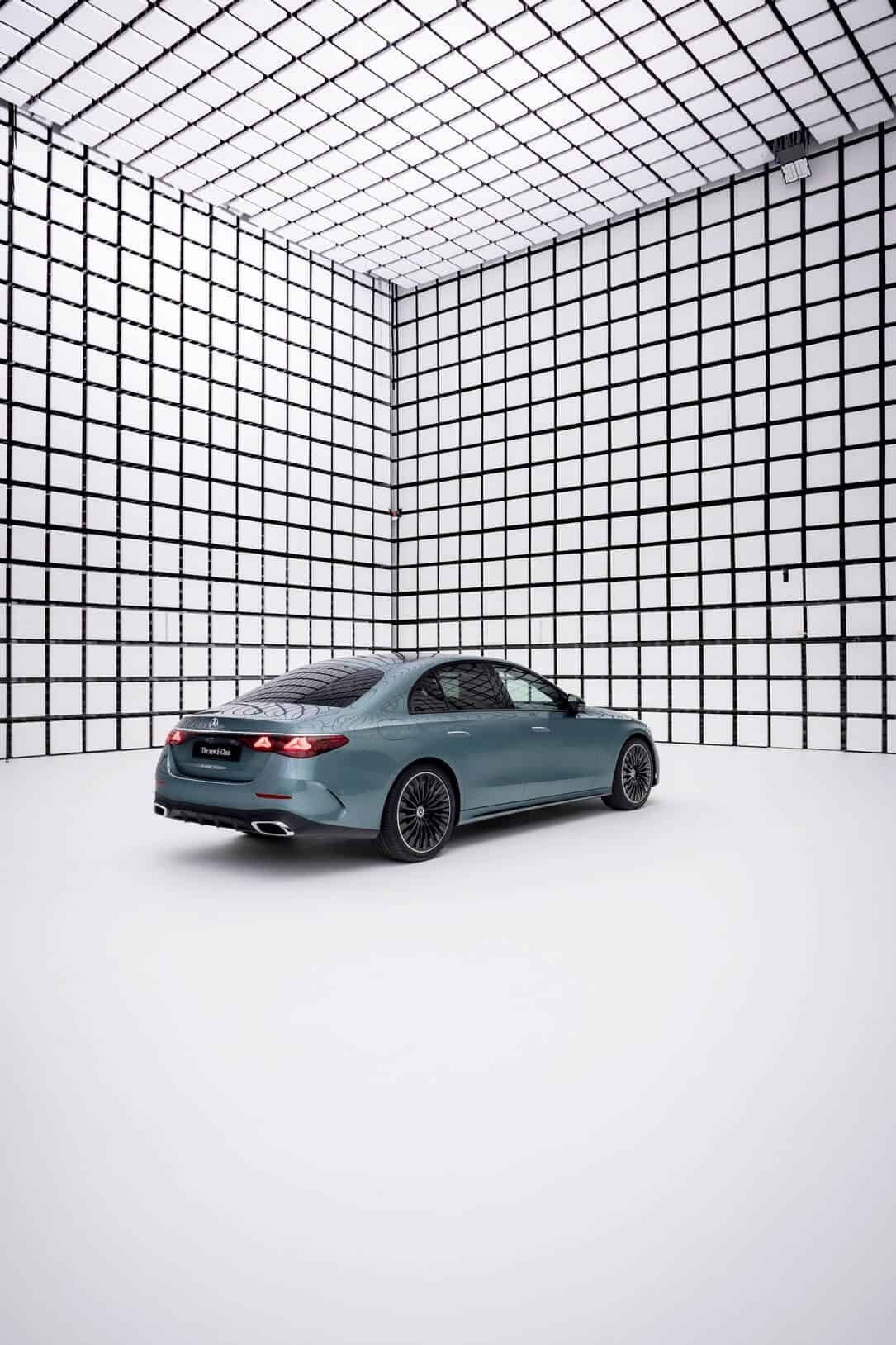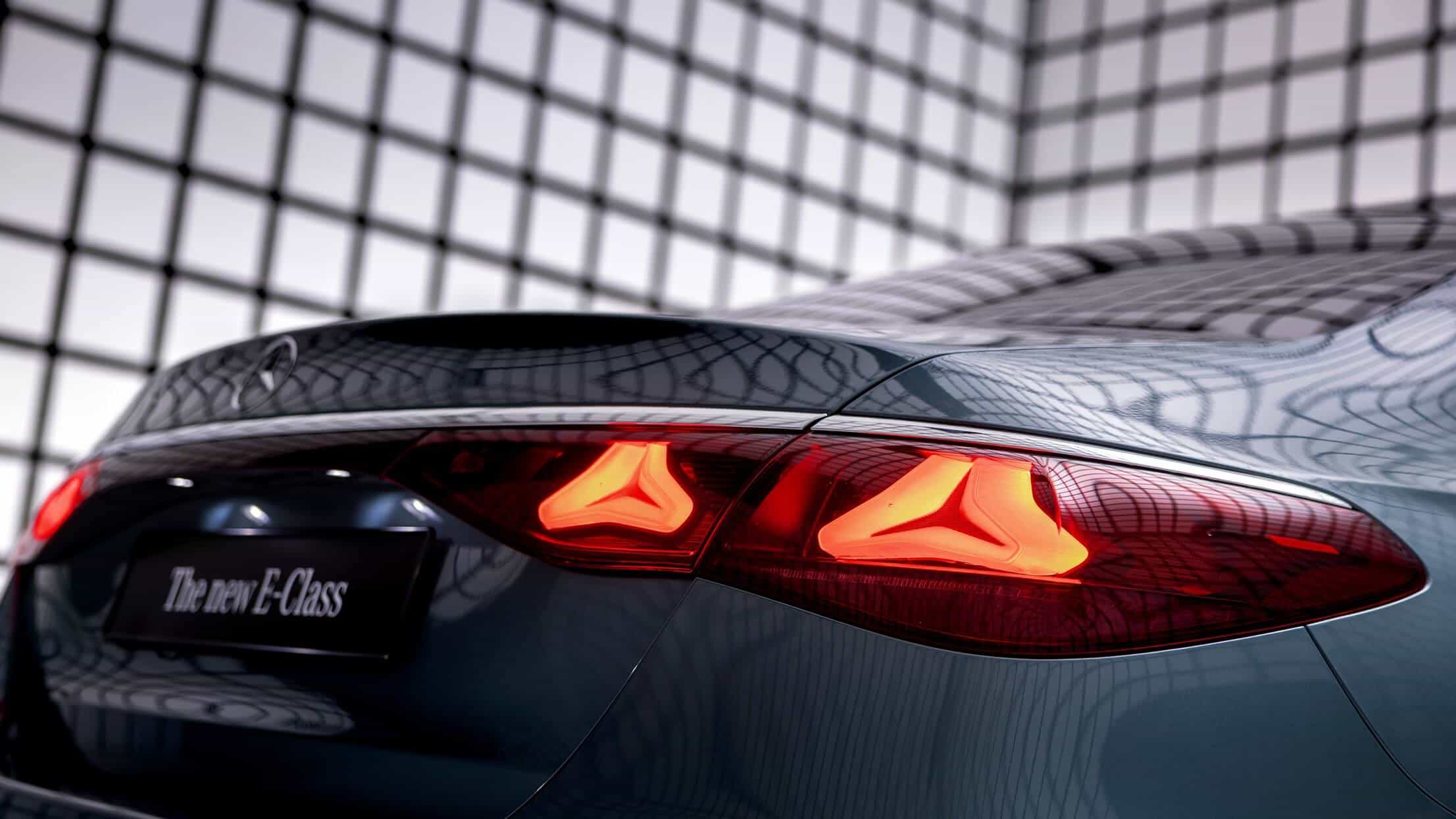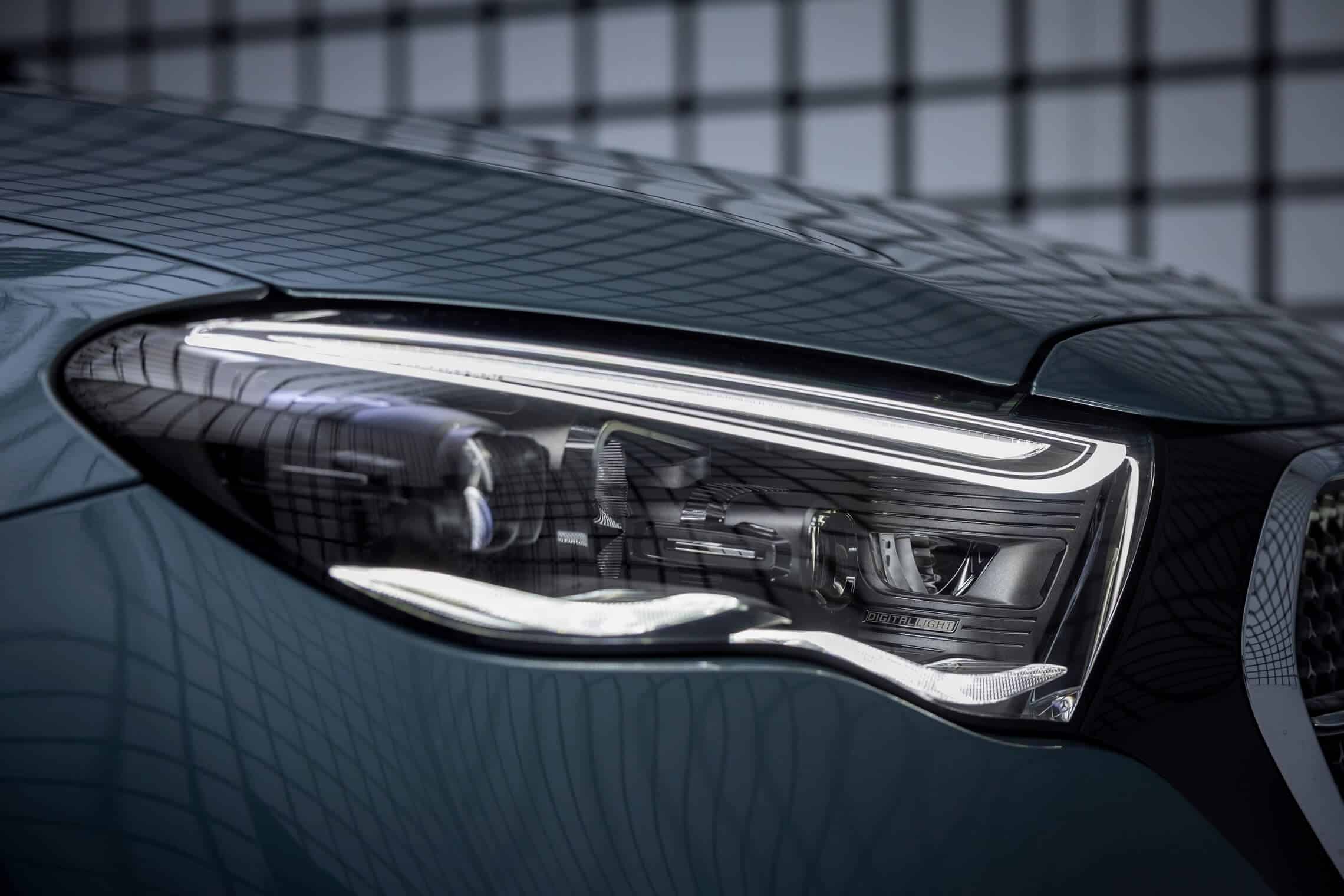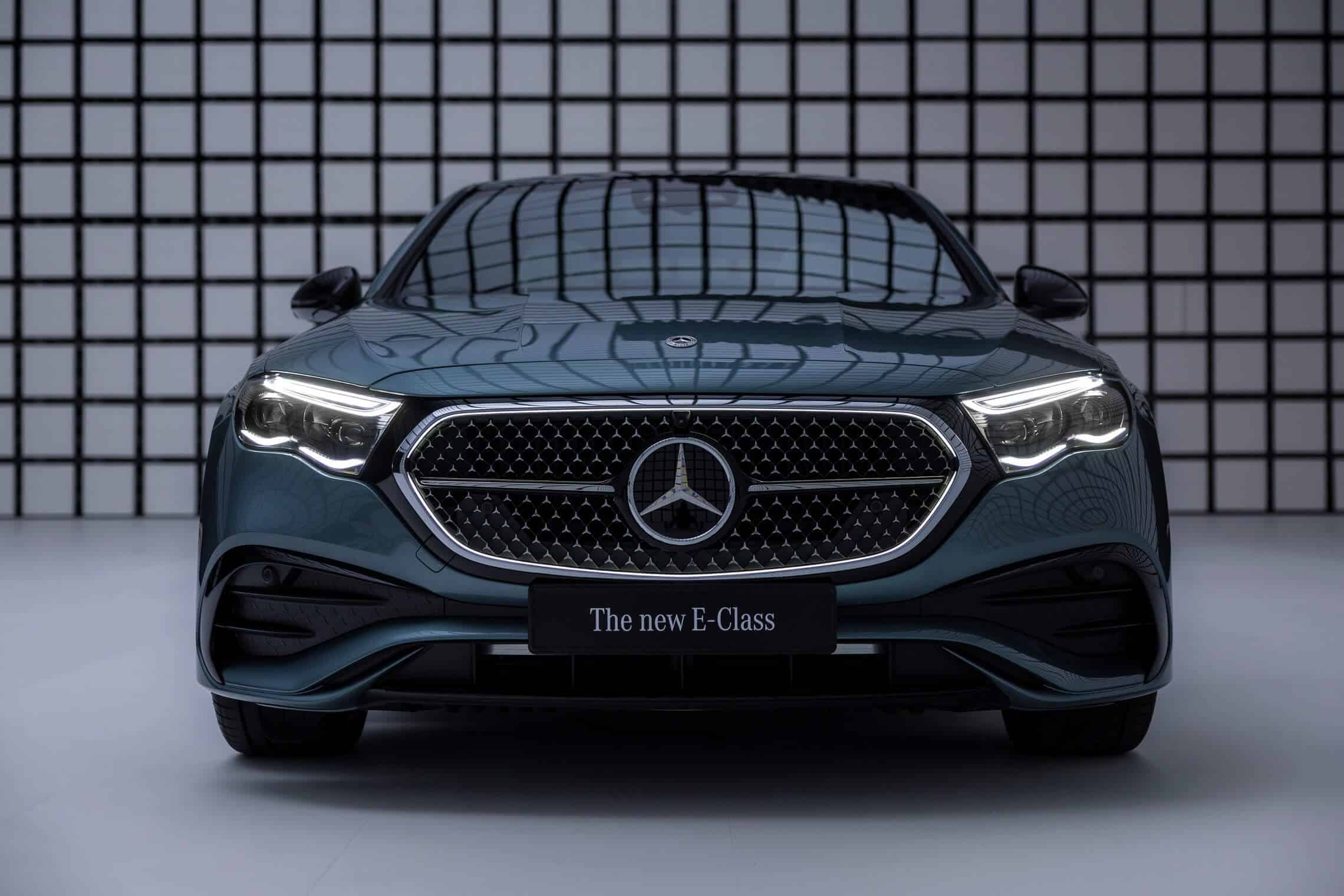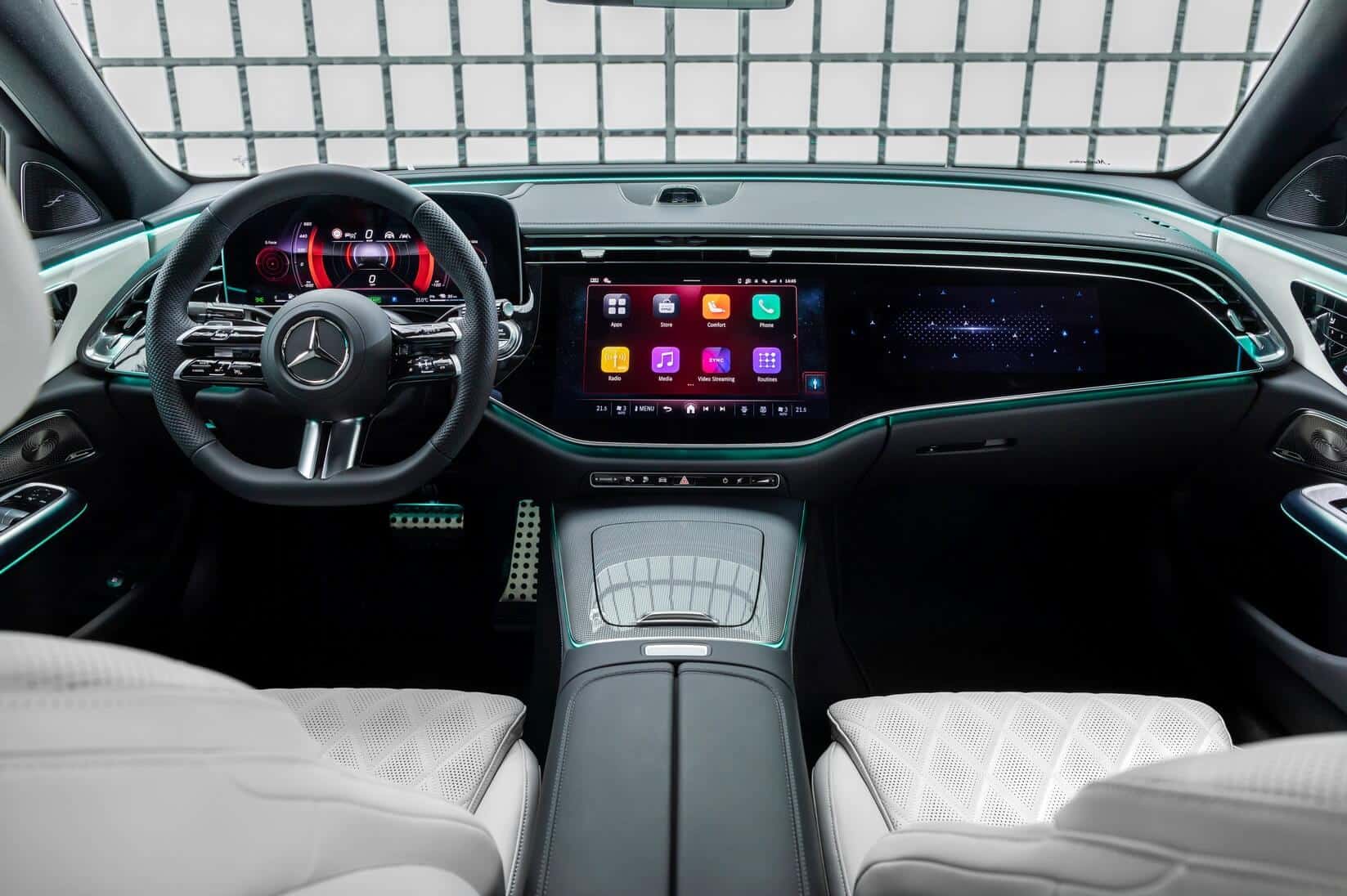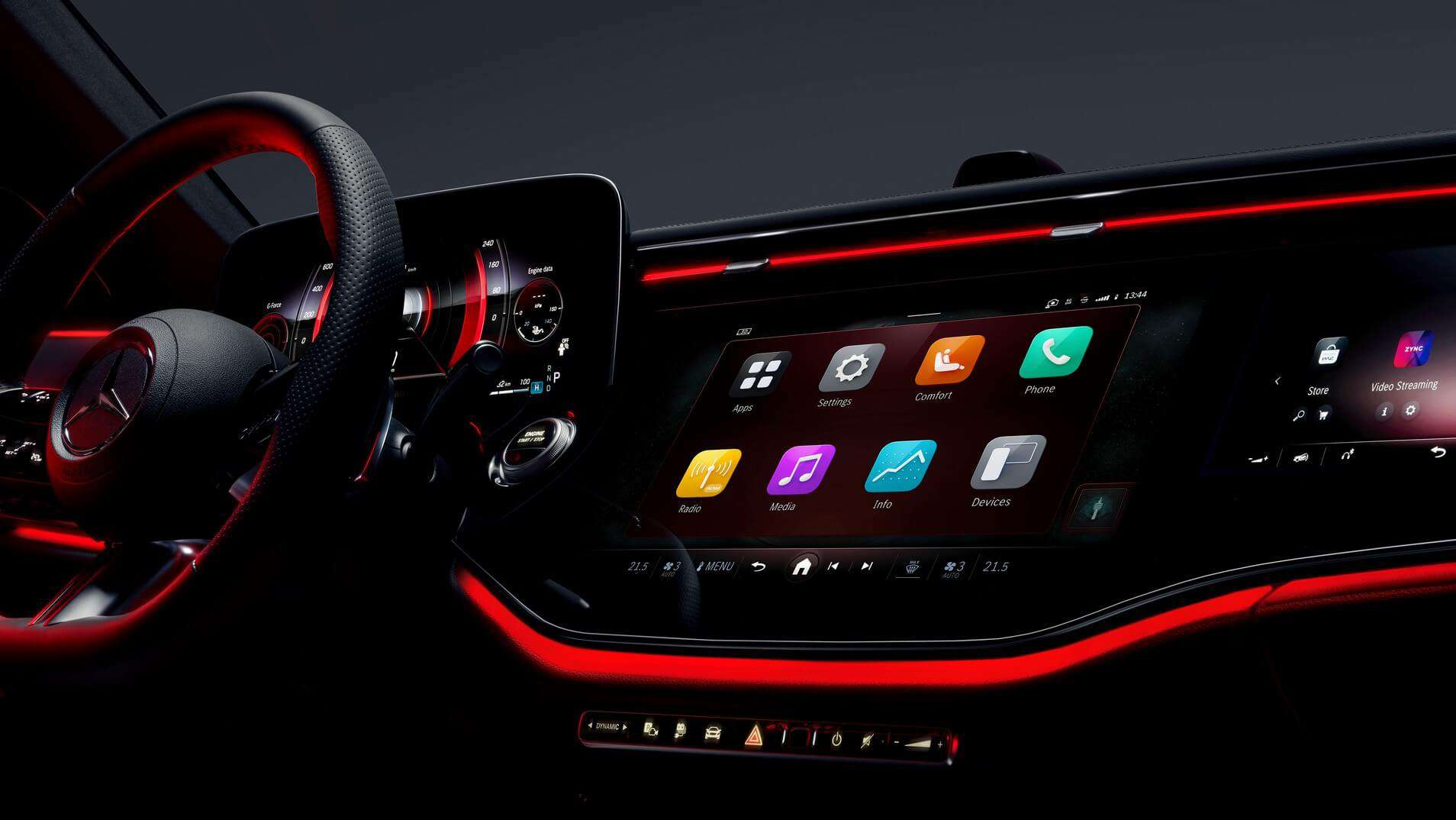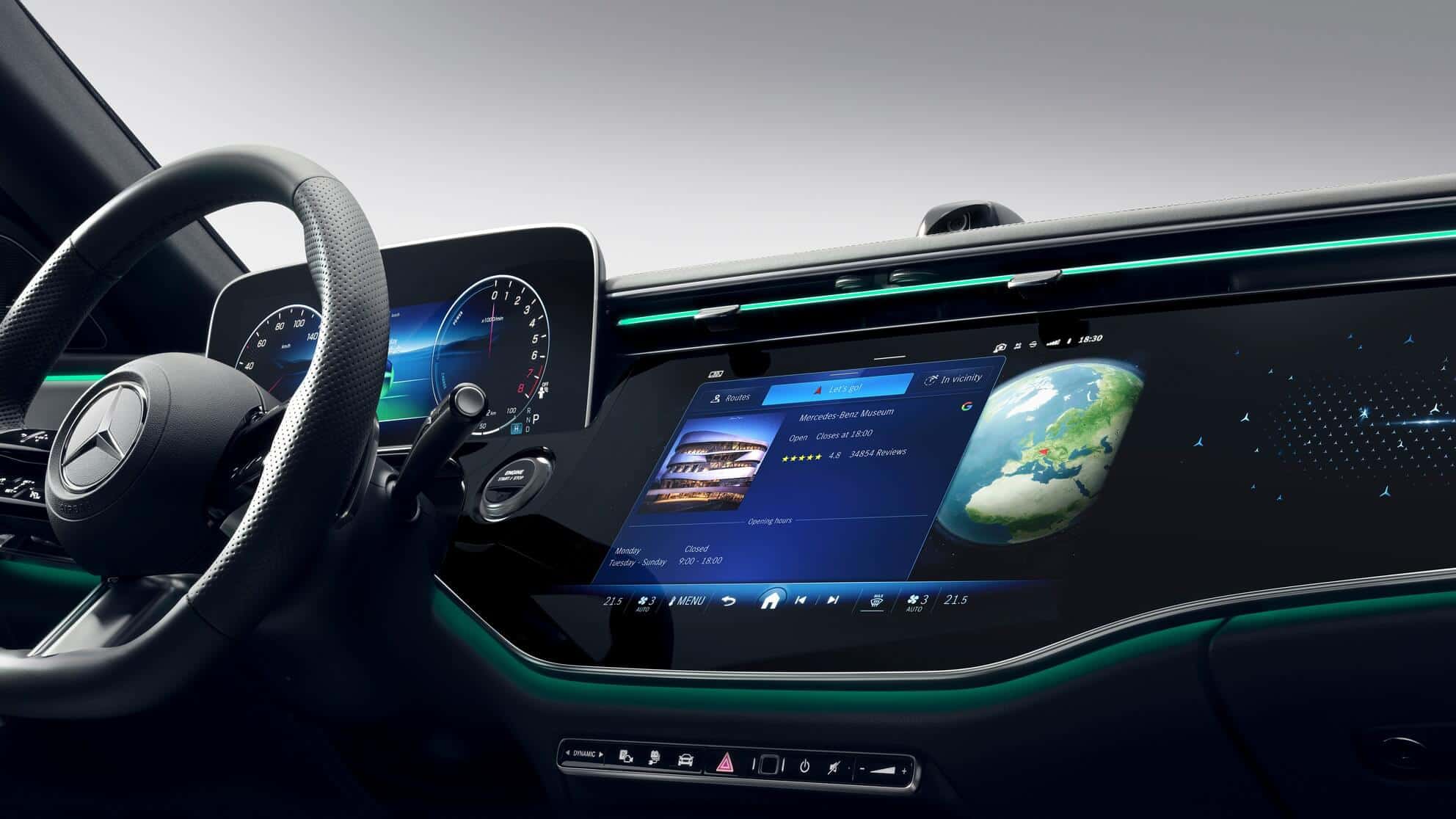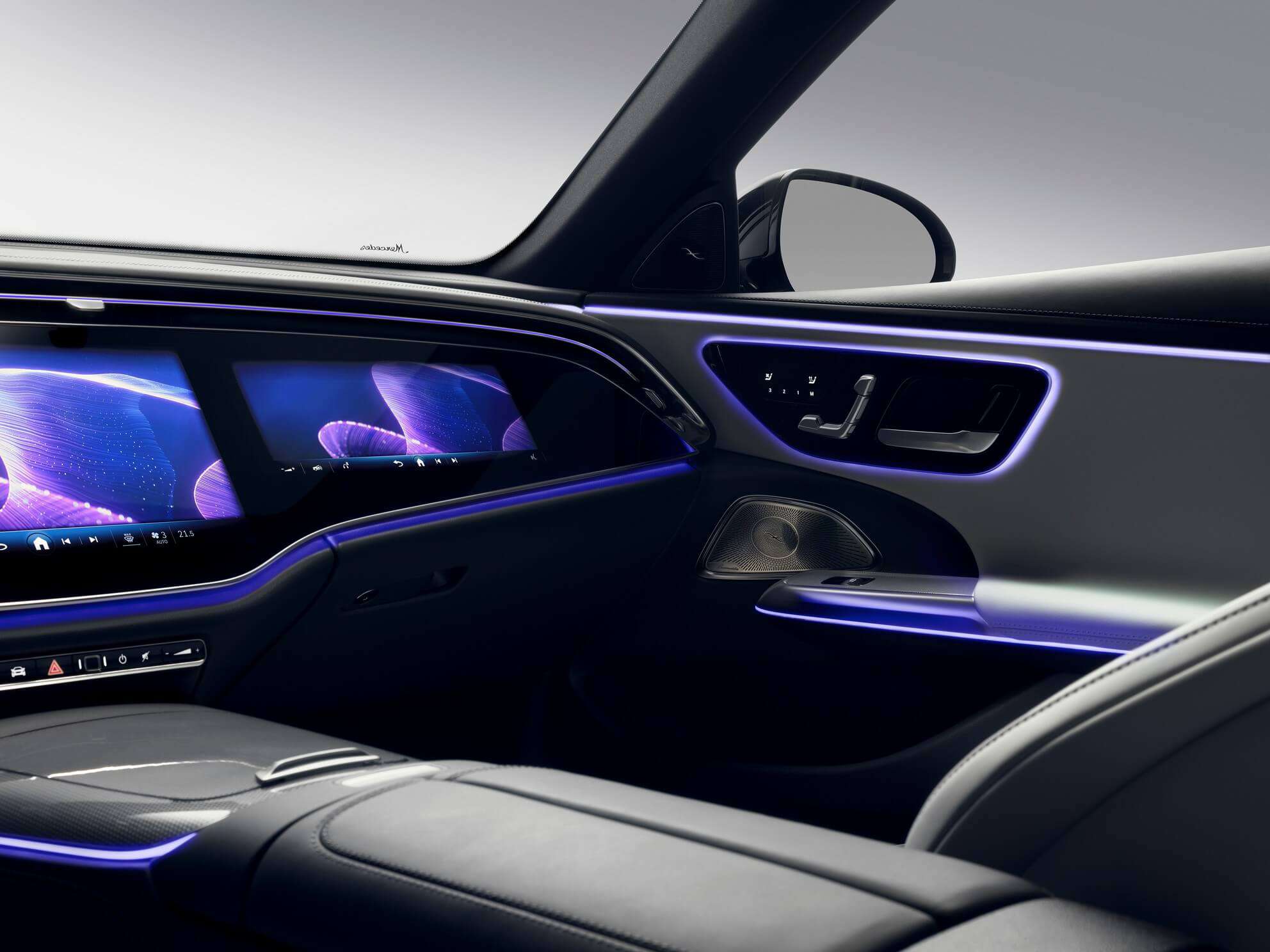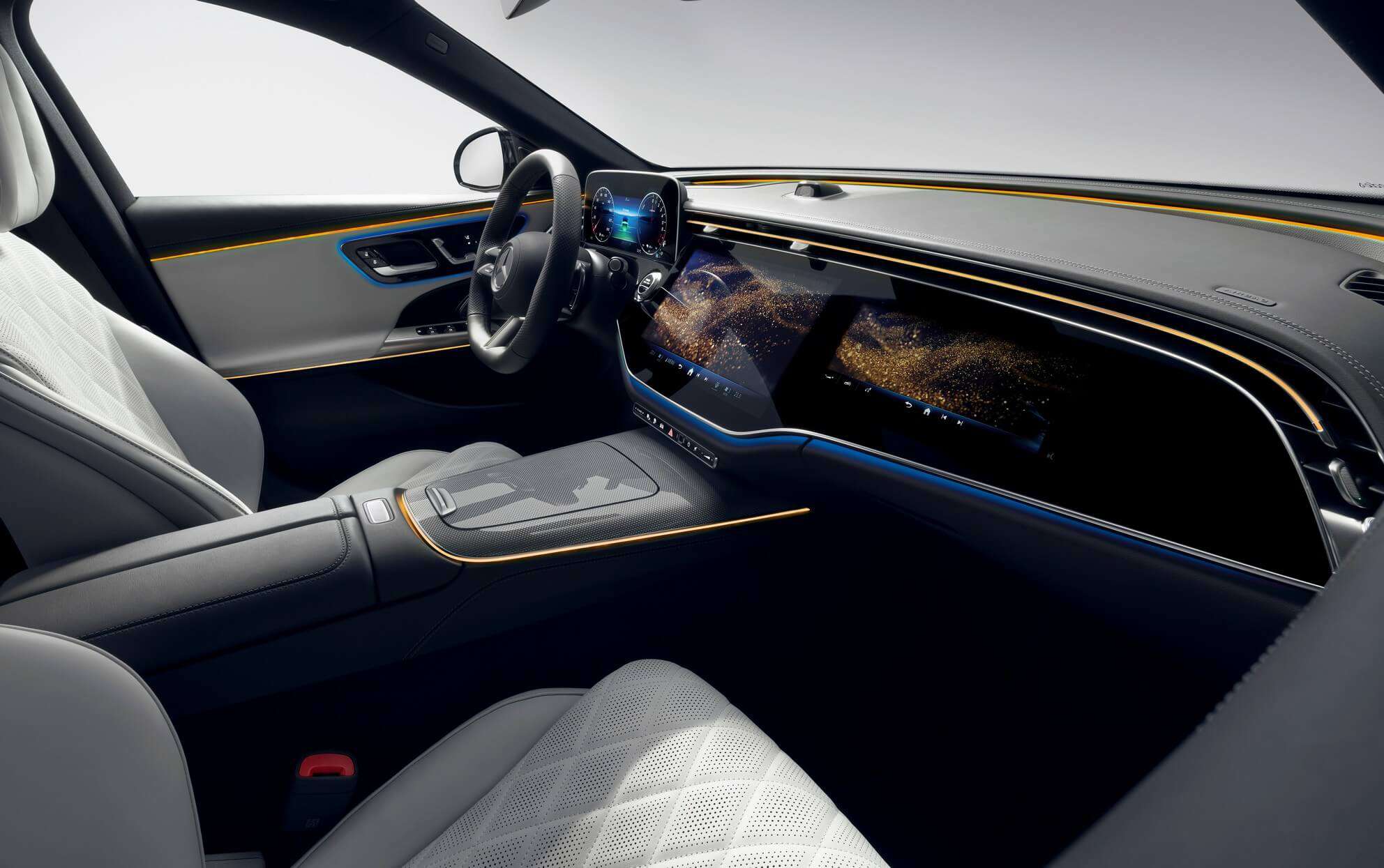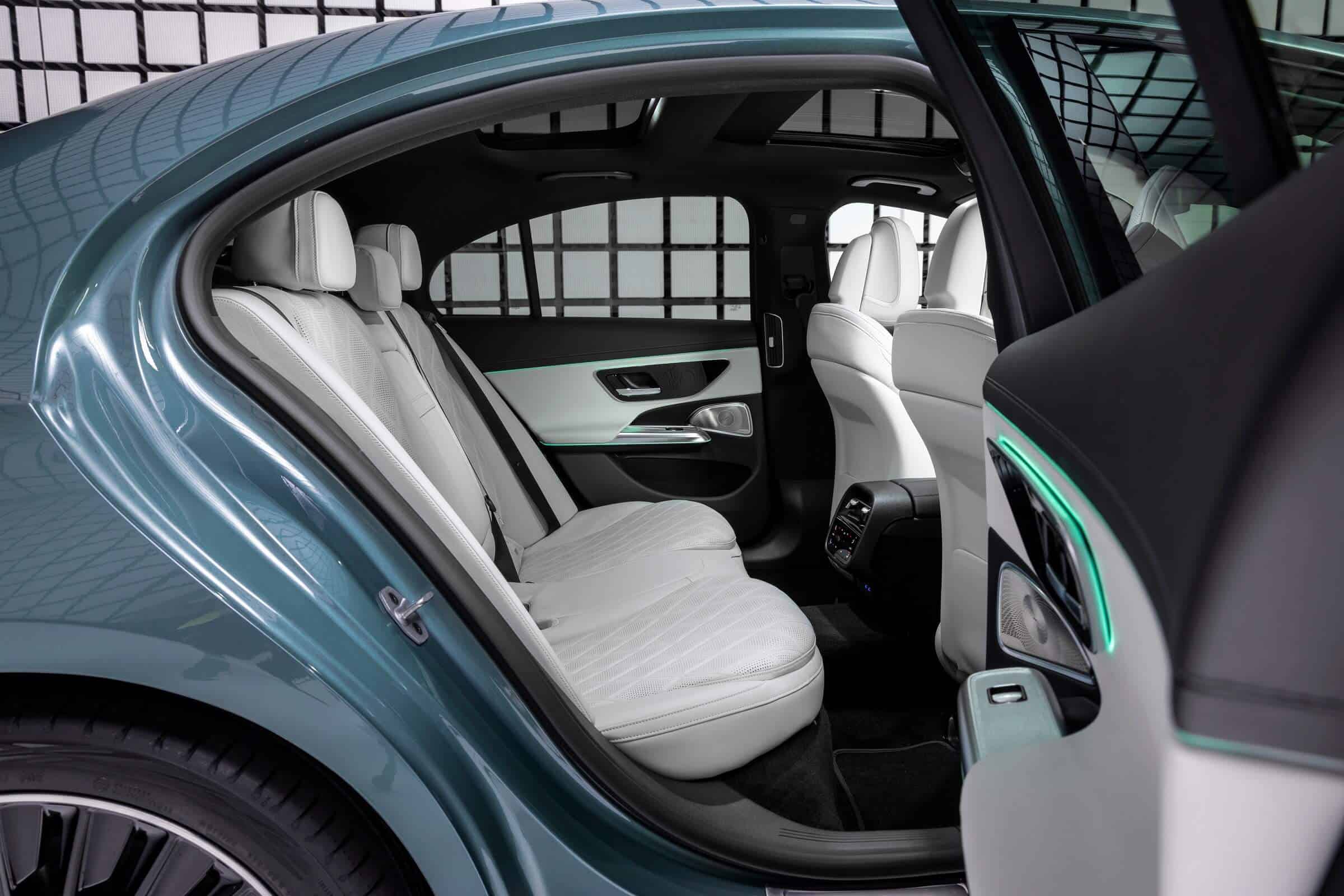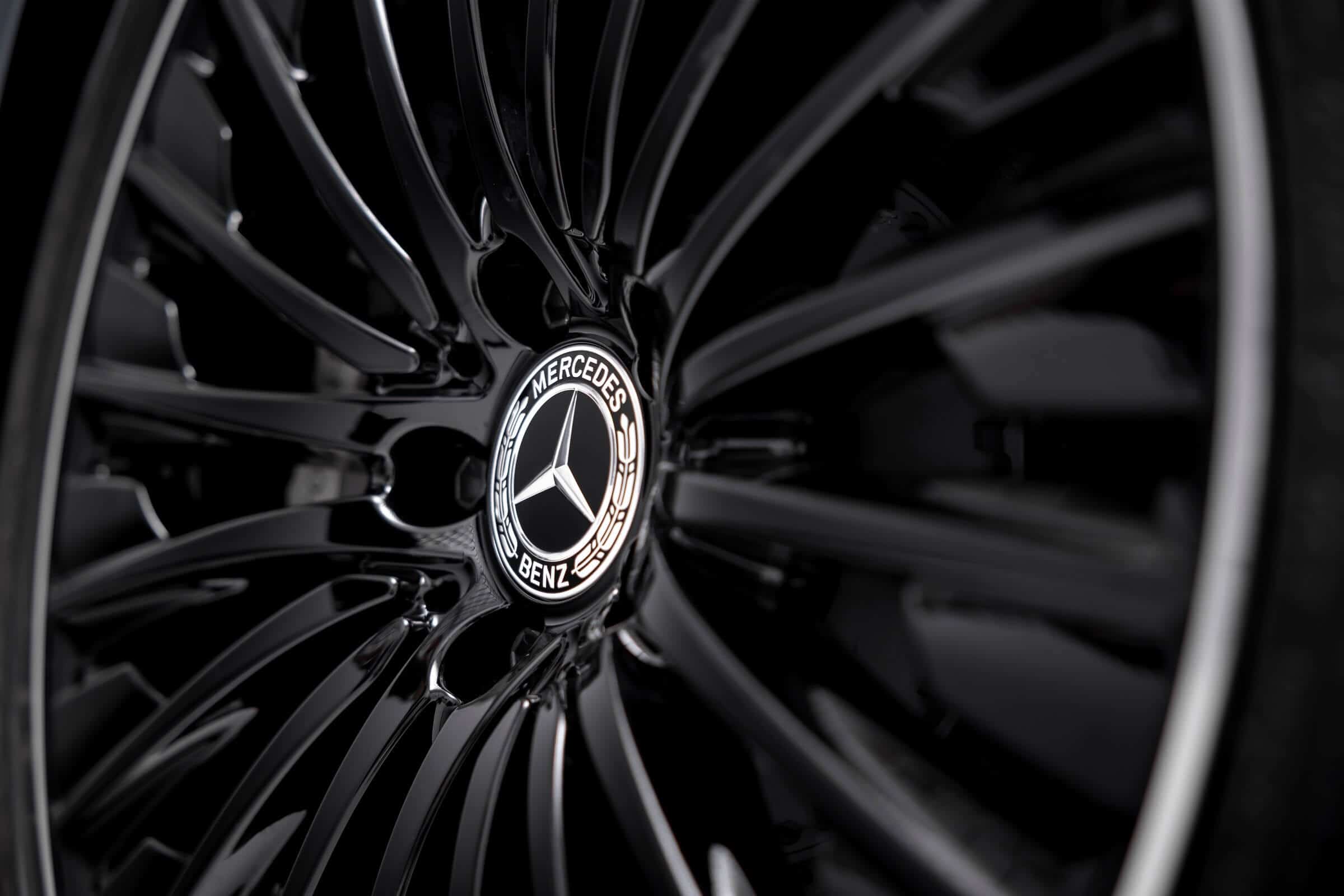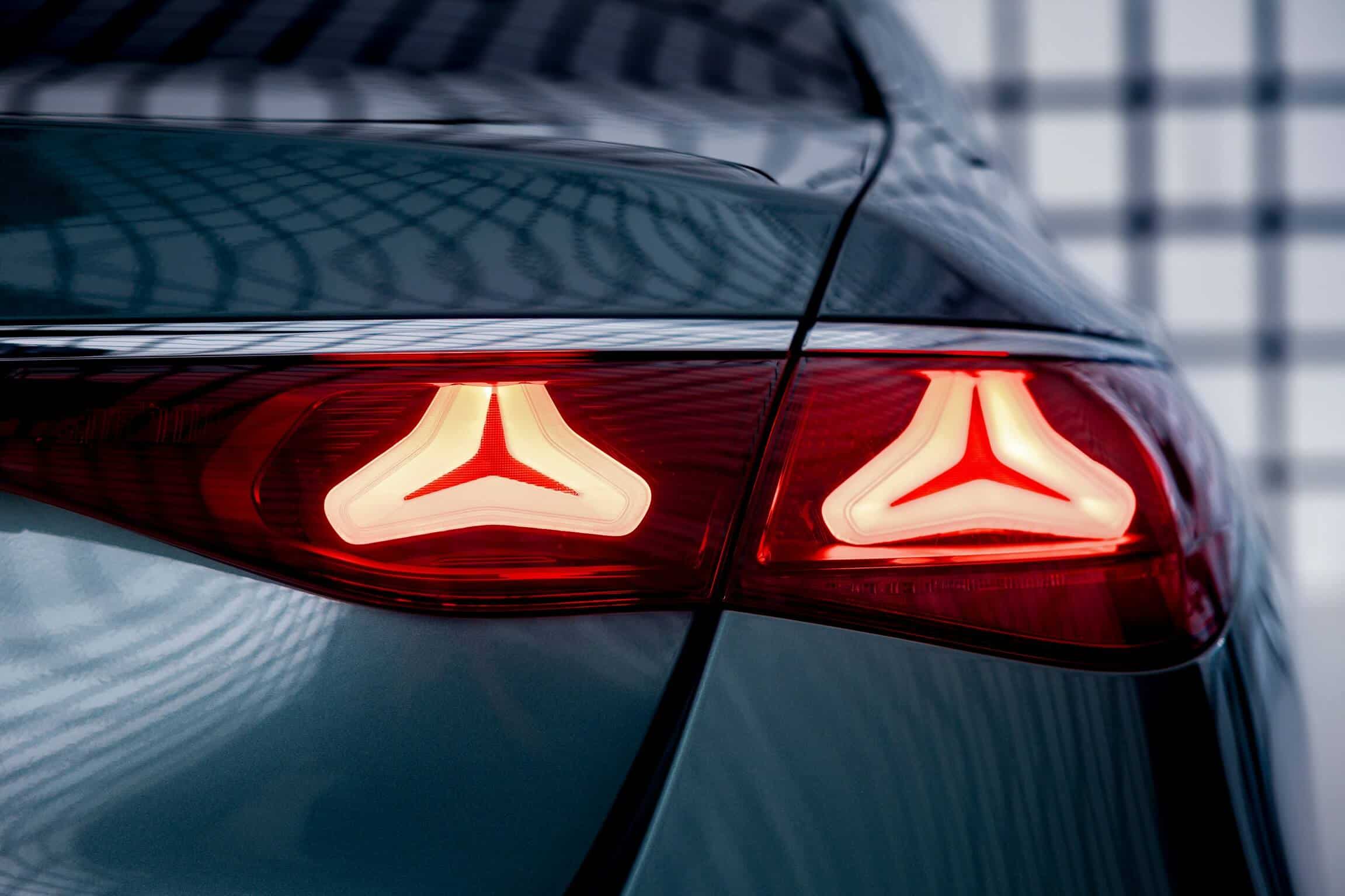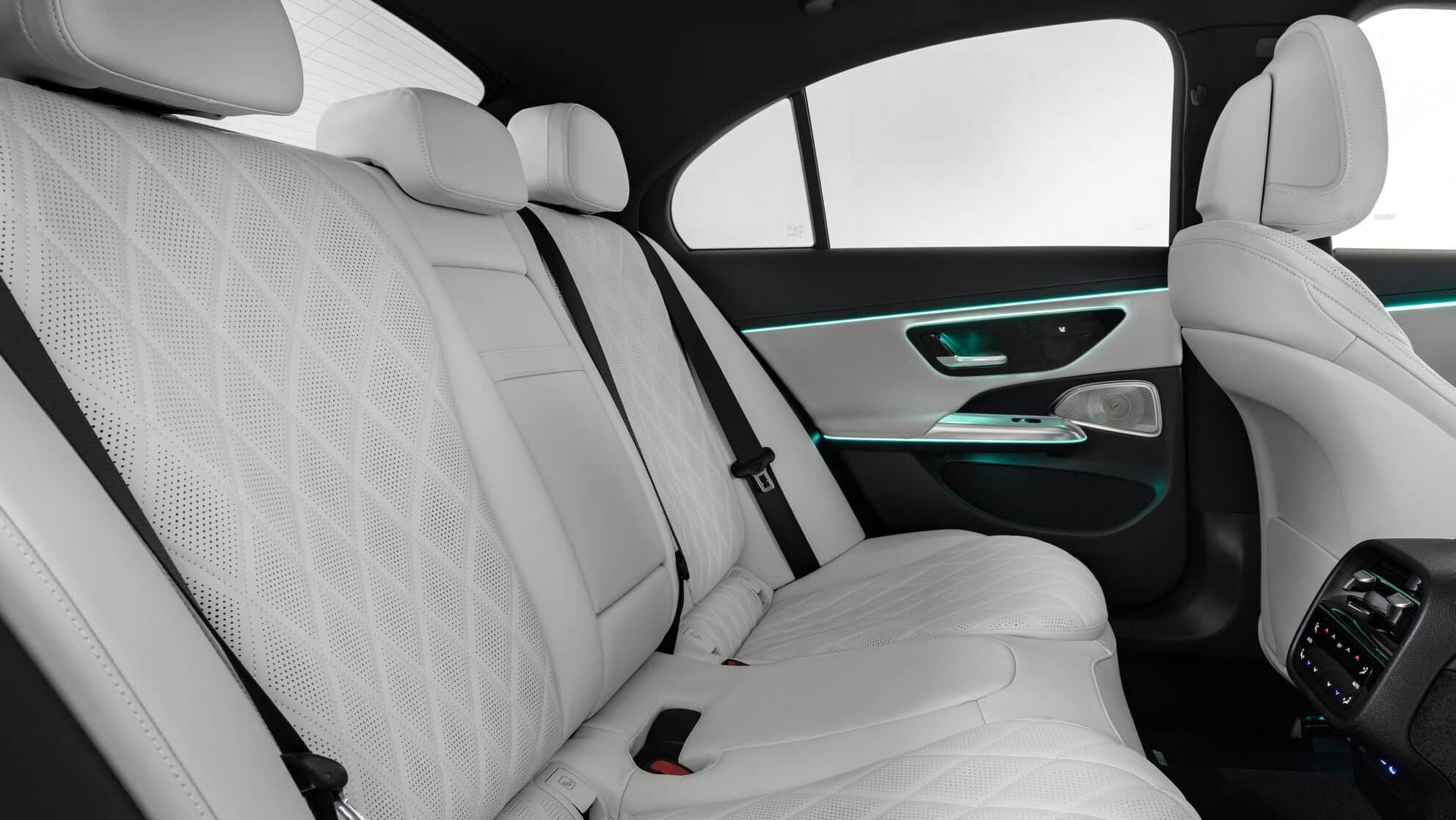The Mercedes E-Class and BMW 5 Series have been at each other’s throats for decades and the rivalry between the two German luxury sedans is still as strong as ever. The three-pointed star is beating its nemesis to the punch by introducing the W214 just weeks before the wraps are programmed to come off the G60. Entering its sixth generation, the E is brimming with technology and doesn’t take any design risks.
Much like the eighth-gen 5 Series is expected to play it safe in terms of styling, the new E-Class adopts an evolutionary design. The only daring detail is at the back where the taillights incorporate the Mercedes logo, which we’re fairly certain will be a love/hate affair. Much like the previous-generation car took after the C-Class and S-Class, the new one is a mélange of cues from its two siblings. At the same time, you could easily mistake it for a facelifted version of the outgoing model.
At 4949 mm long, 1880 mm wide, and 1468 mm tall or 194/75/58 inches per the US press release, the new E-Class is a tad larger than its predecessor. The wheelbase has been stretched by 20 mm to 2961 mm to provide rear passengers with more room to stretch their legs (+10 mm kneeroom and +17 mm legroom). At the same time, elbow width has jumped by 25 mm to 1519 mm, with Mercedes saying it’s almost at an S-Class level now. The trunk can hold 540 liters but the volume drops to 370 liters if you get a plug-in hybrid. Wheel size varies from 17 to 21 inches.
While the exterior is more of the same, the interior has been transformed to mimic the EQE electric sedan. The 2024 Mercedes E-Class gets the so-called Superscreen with an optional third display on the passenger side of the dashboard. If you’re wondering why there’s a camera sticking out from the dashboard, it’s for taking selfies and doing video conferences.
On the software side, there’s a new App Store with TikTok, Angry Birds, and Zoom available upon launch. In addition, over 30 streaming services are supported by the new E-Class, with more to be added during the car’s life cycle, covering both business and entertainment spectrums. Gesture cameras – one for each front-seat occupant – will be available at an additional cost, along with a dashcam mounted behind the rearview mirror.
Engine choices are plentiful, especially in Europe. The lineup starts with an E200 featuring a turbocharged 2.0-liter gasoline unit making 204 hp and 320 Newton-meters (236 pound-feet) of torque for a 0 to 62 mph (100 km/h) in 7.5 seconds and a top speed of 149 mph (240 km/h). An E220d with a 2.0-liter diesel has 197 hp (145 kW) and 324 lb-ft (440 Nm) for a sprint in 7.6 seconds and a maximum speed of 148 mph (238 km/h).
The diesel is also available with all-wheel drive (4Matic), in which case it’s 0.2s slower from 0 to 62 mph (100 km/h) and tops out at 145 mph (234 km/h). These three configurations have a mild-hybrid setup with an electric motor temporarily providing 23 hp (17 kW) and 151 lb-ft (205 Nm). All come equipped exclusively with a nine-speed automatic transmission.
No fewer than three plug-in hybrids will be available on the Old Continent: E300e, E300e 4Matic, and E400e Matic. The first two use a 2.0-liter turbo engine with 204 hp (150 kW) while the more potent variant also has a 2.0-liter mill but with 252 hp (185 kW). These PHEVs share an electric motor rated at 129 hp (95 kW) and 324 lb-ft (440 Nm). The combined output in the E300e models is 308 hp (230 kW) and 404 lb-ft (550 Nm) whereas the all-wheel-drive-only E400e has 375 hp (280 kW) and 478 lb-ft (650 Nm).
The plug-in hybrid E-Class models share a 25.4-kWh battery pack and promise up to 62 miles (100 kilometers) of electric range in the WLTP cycle. With an optional DC charger, it will be possible to fully replenish the battery in about half an hour. Going for the E400e 4Matic will enable the electrified sedan to hit 62 mph (100 km/h) in 5.3 seconds and a top speed of 155 mph (250 km/h). Later in the life cycle, diesel PHEVs will also be launched.
The US lineup is basic by comparison since customers can opt for either an E350 or an E450, with both offered only with 4Matic, mild-hybrid tech and a nine-speed automatic gearbox. The former has a 2.0-liter unit with 255 hp and 295 lb-ft (400 Nm) while the latter uses a larger inline-six 3.0-liter producing 375 hp and 369 lb-ft (502 Nm). Both are electronically capped at 130 mph (209 km/h).
The revamped E-Class gets the usual dual-axle air suspension as well as all-wheel steering by turning the rear wheels at a maximum angle of 4.5 degrees to reduce the turning circle by up to 90 centimeters (35.4 inches). Aero tweaks combined with door handles that remain flush with the body have lowered the drag coefficient to 0.23 for better efficiency.
Mercedes will diversify the E-Class lineup later this year with the launch of a wagon to take on the future G61 BMW 5 Series Touring while high-performance AMG models are expected to arrive as early as 2024. The coupe and convertible are going to be replaced by a pair of CLE models, which will also serve as a substitute for the two-door C-Class variations. Meanwhile, sales of the regular models are scheduled to commence this summer in Europe, with the US likely not far behind.
Source: Mercedes-Benz







